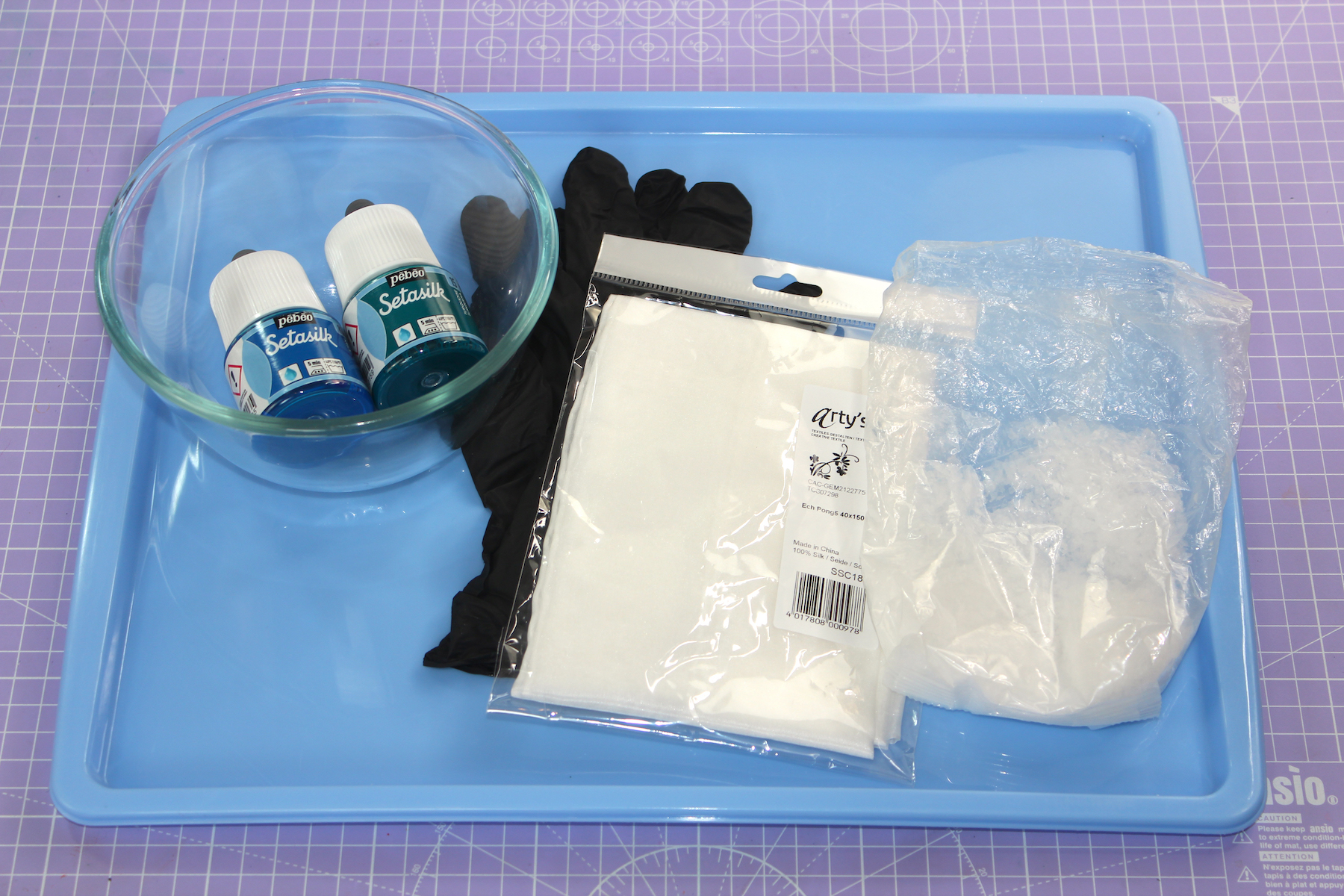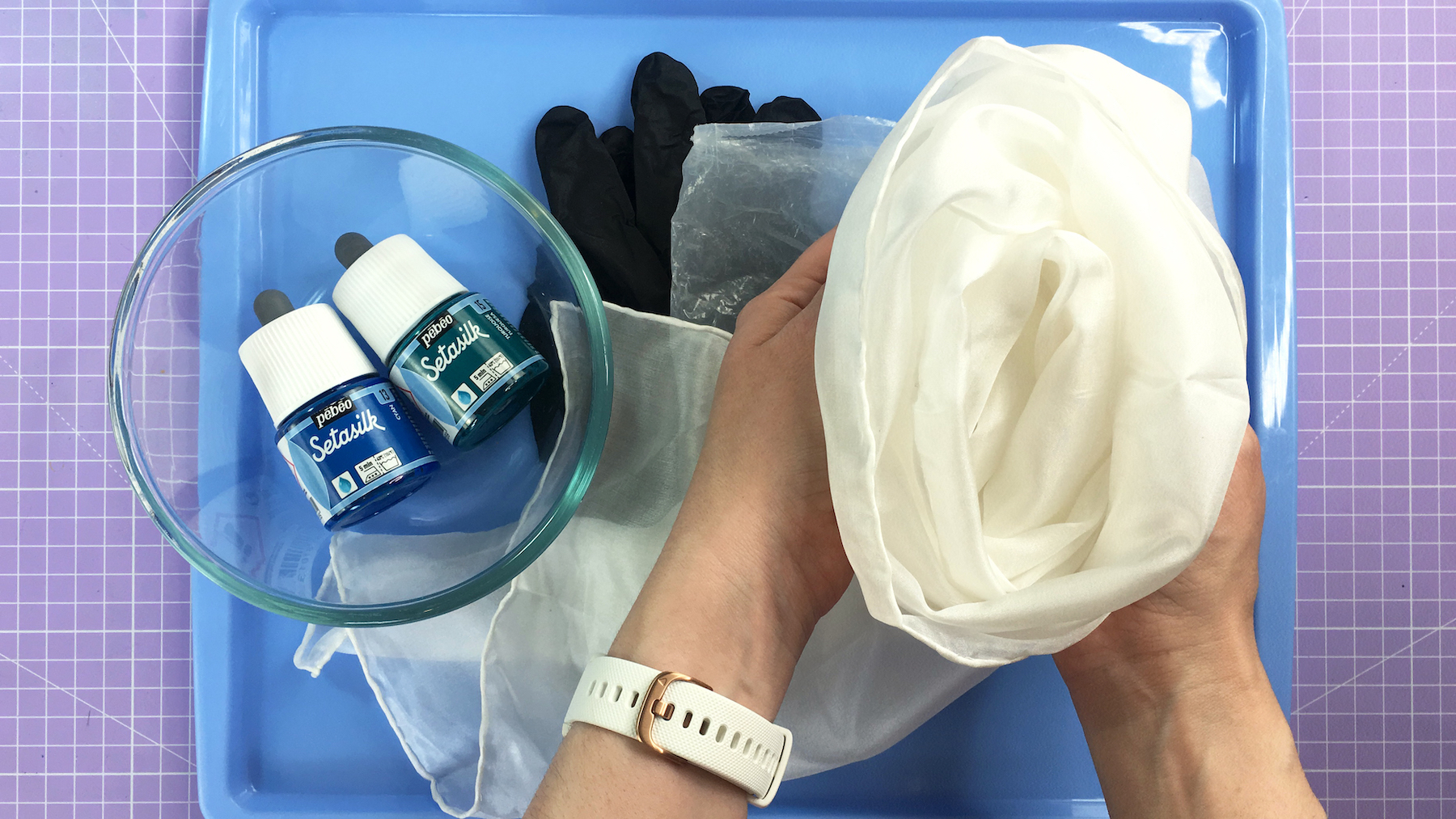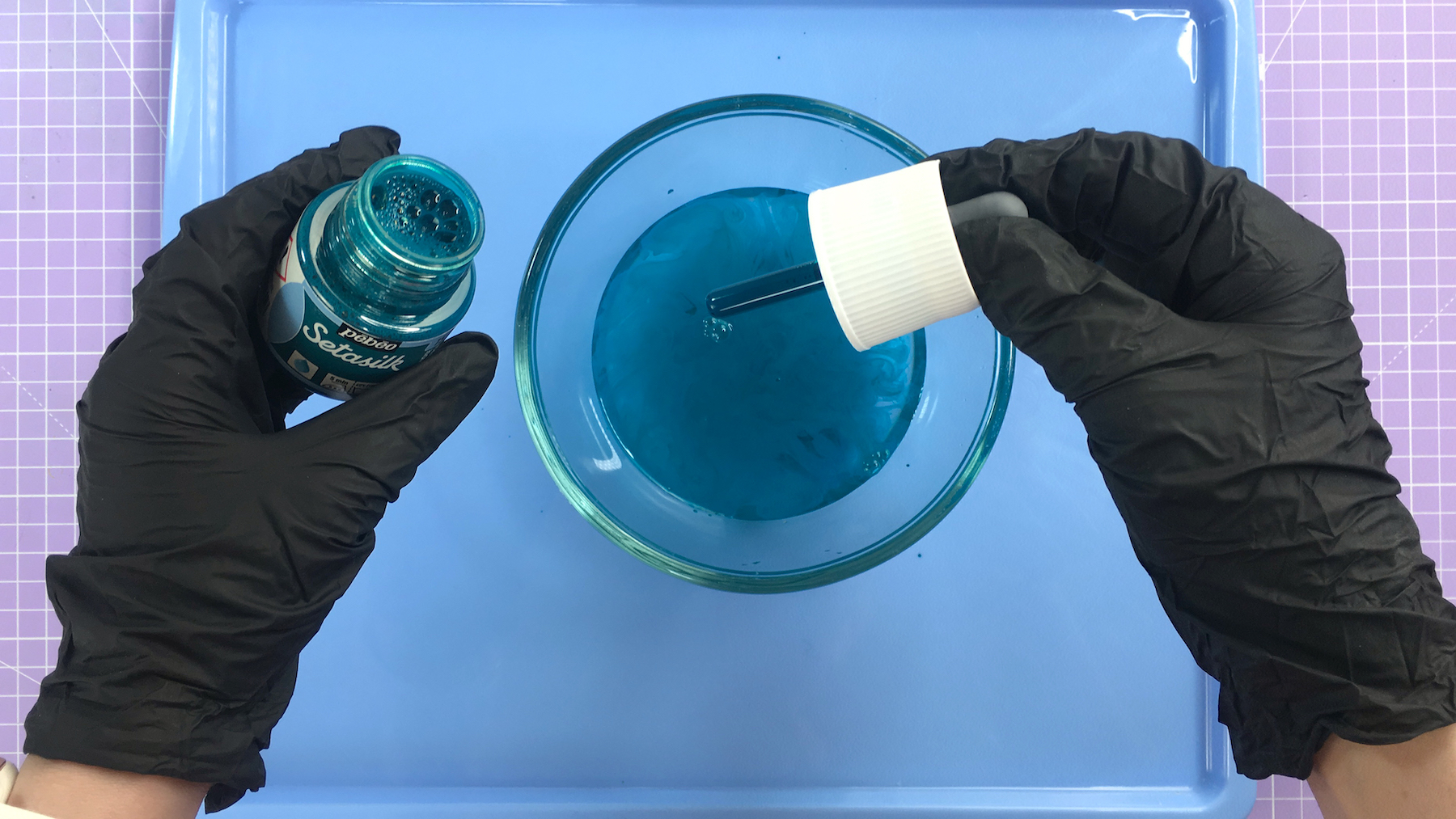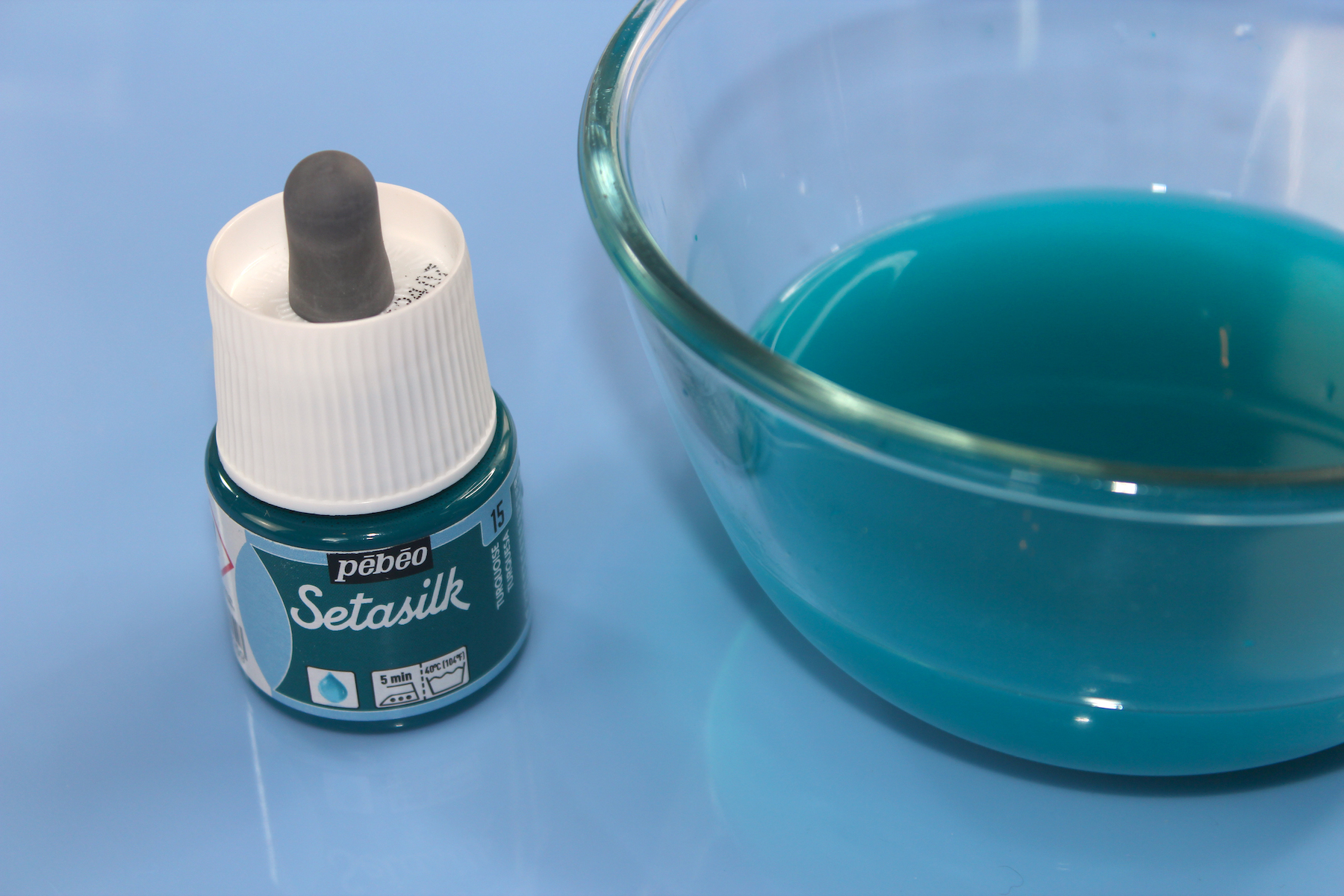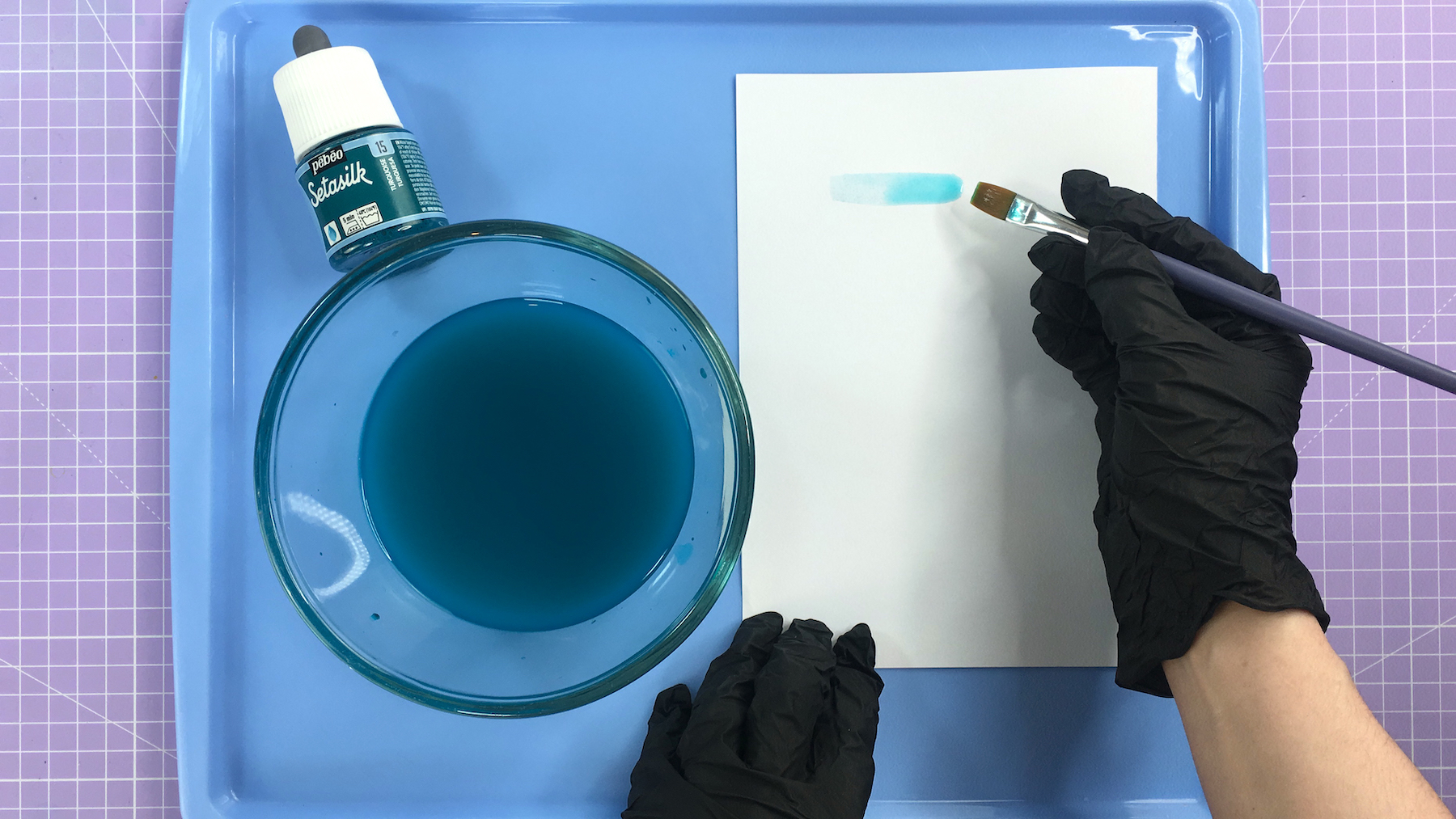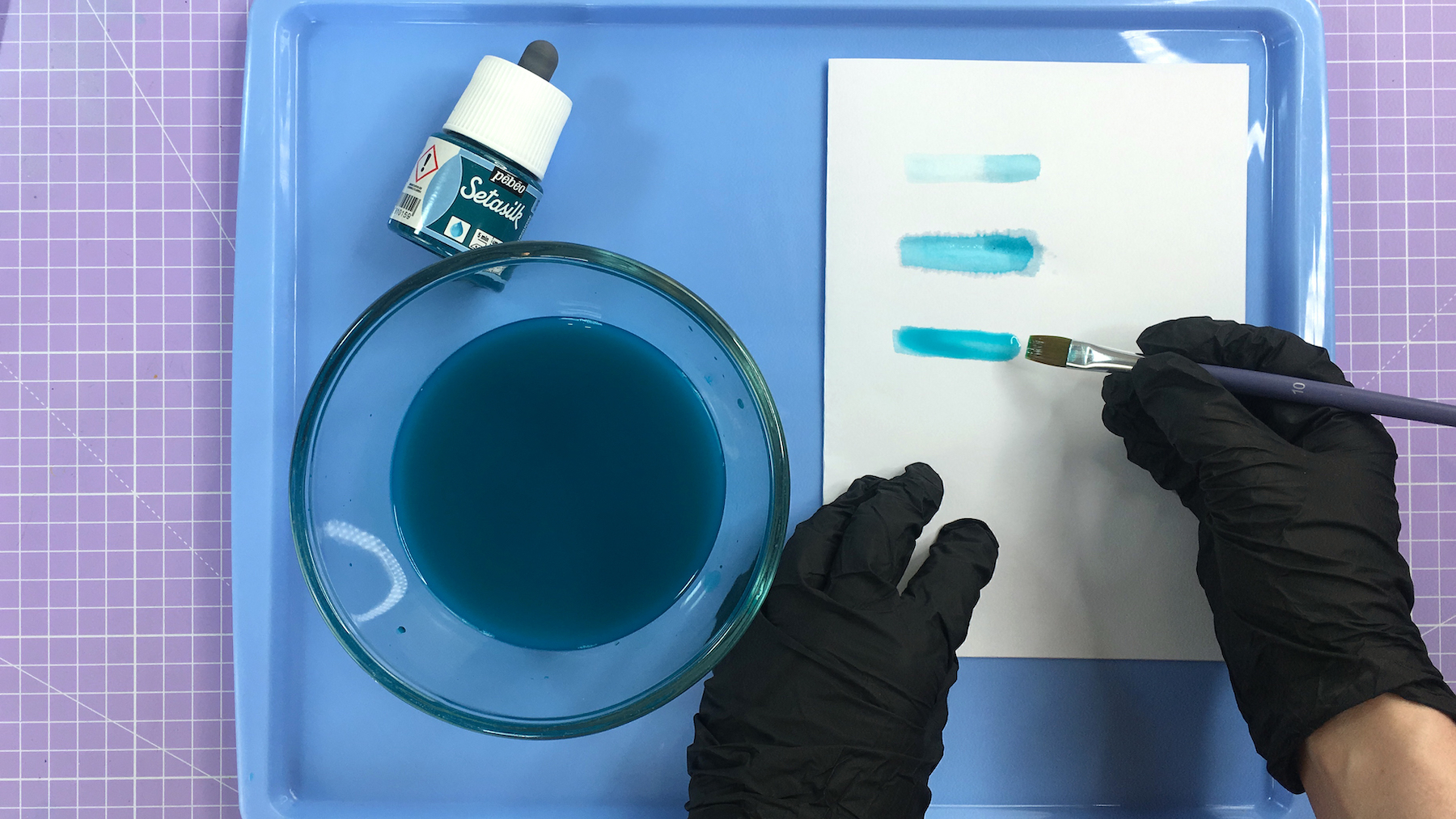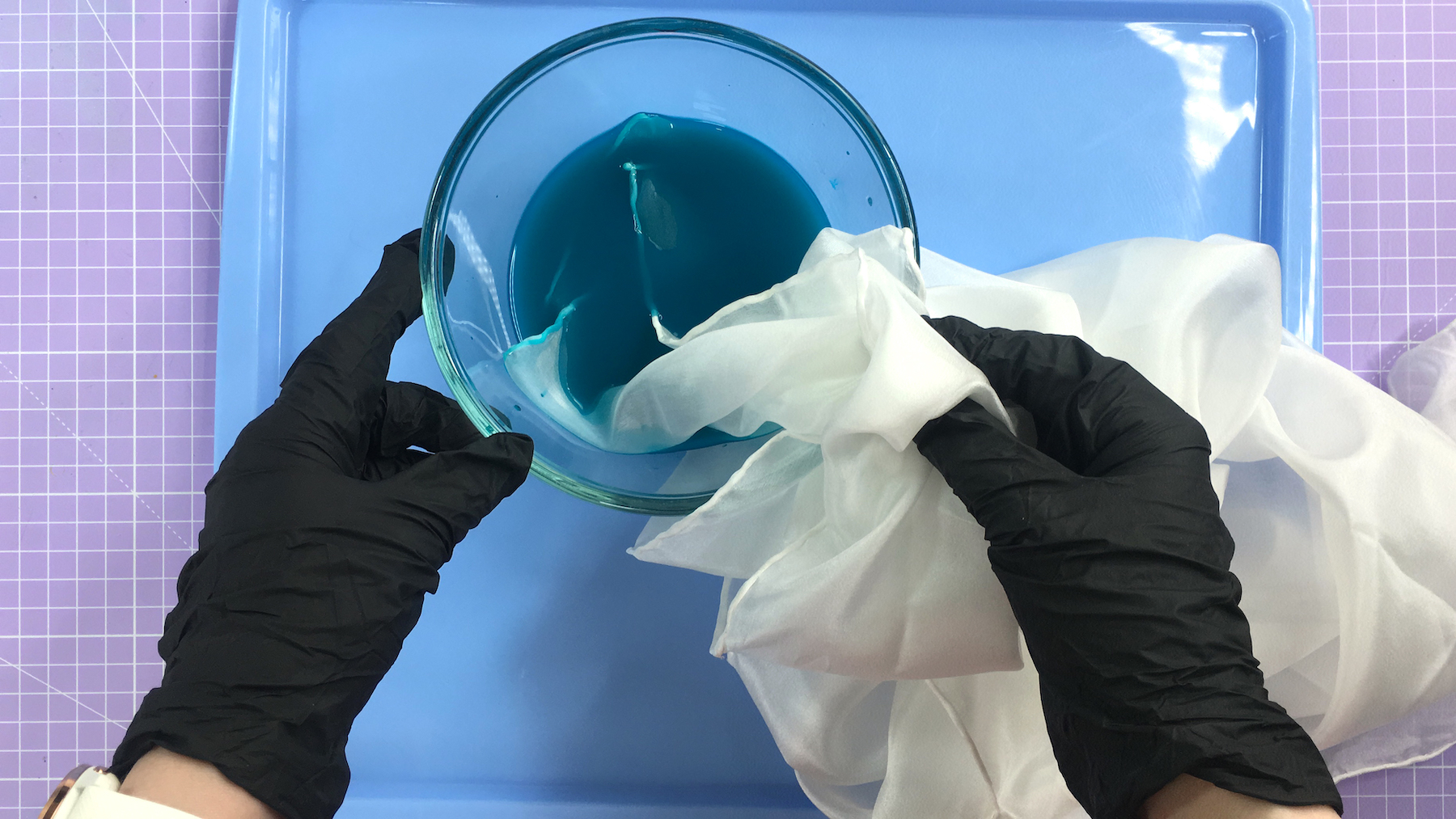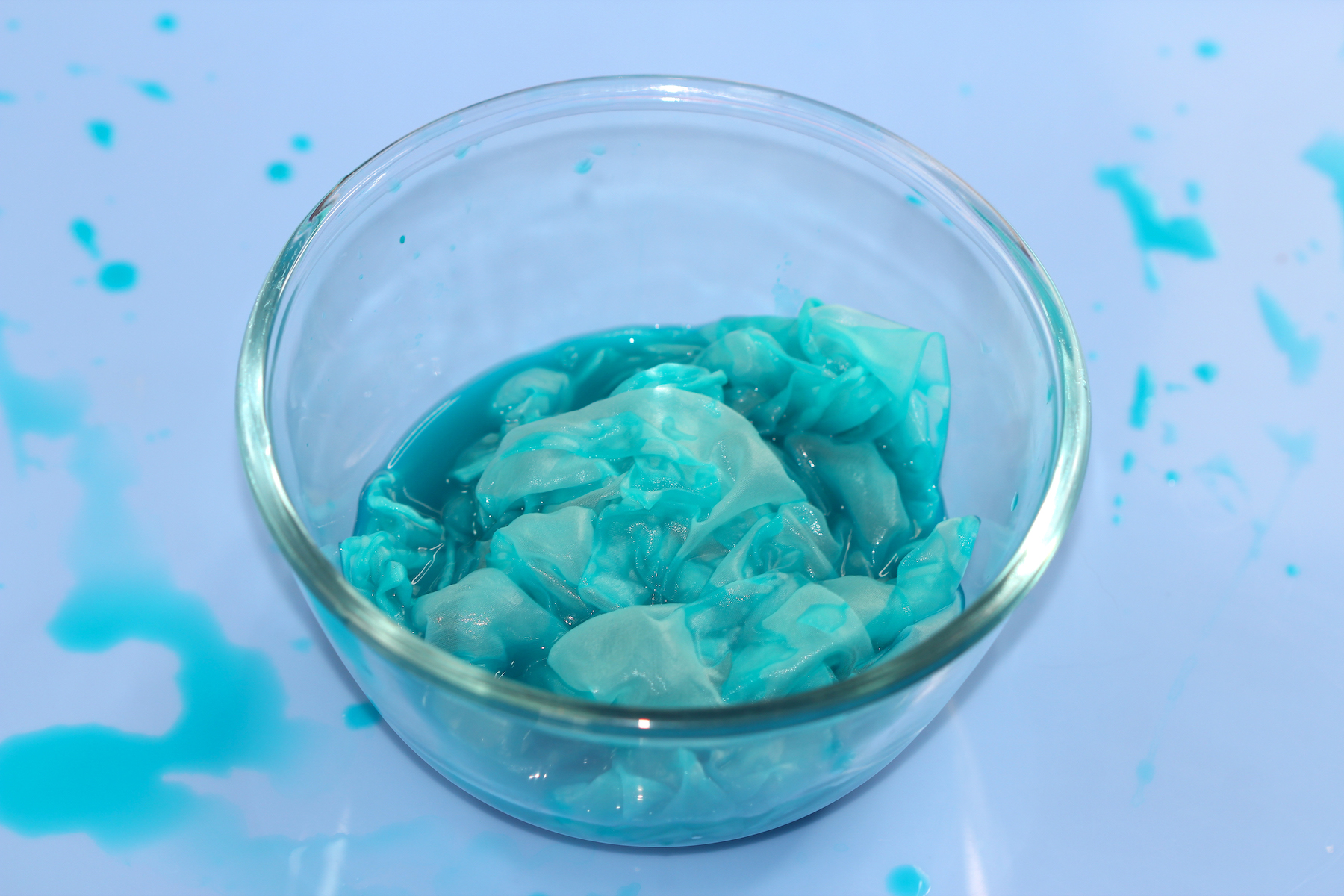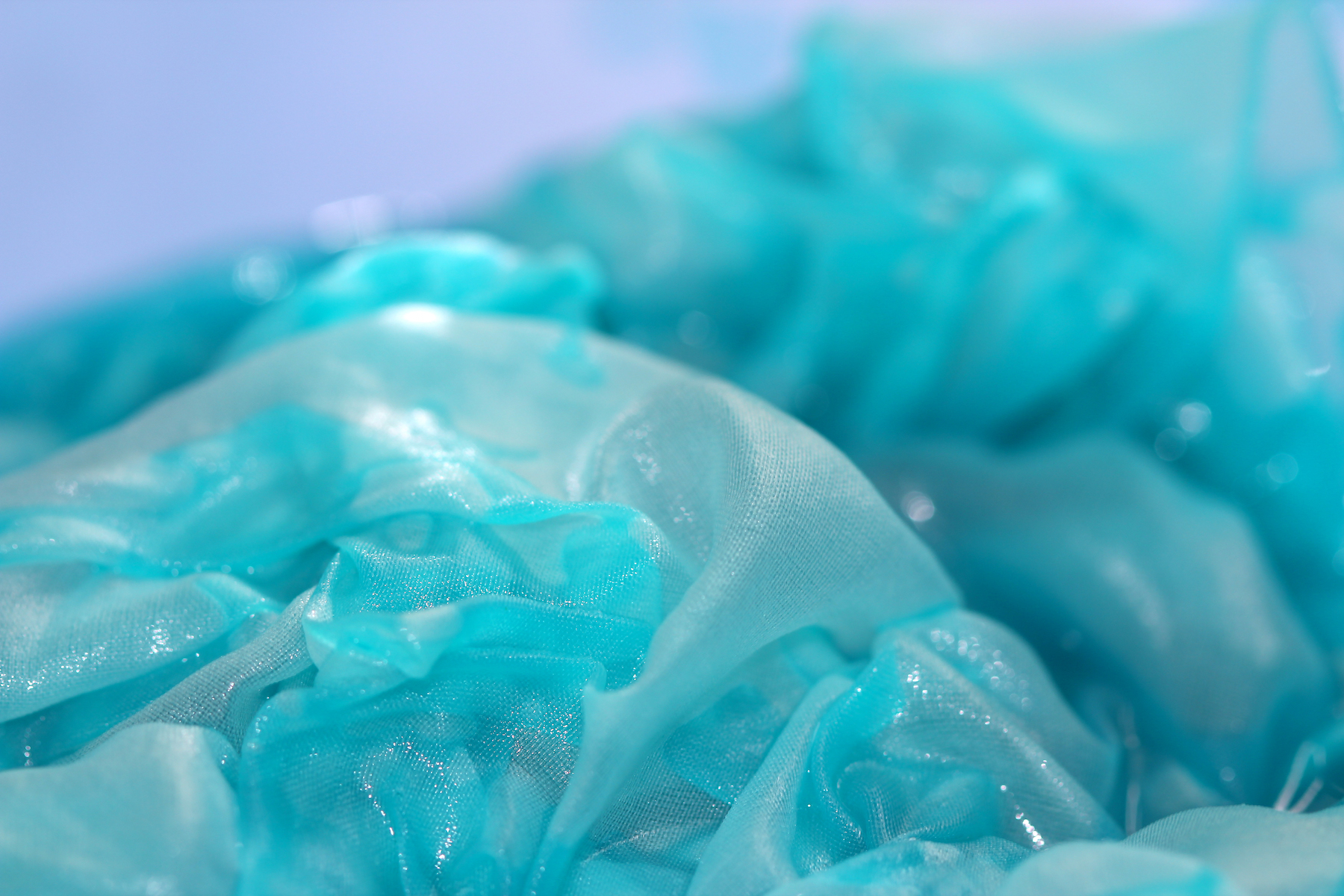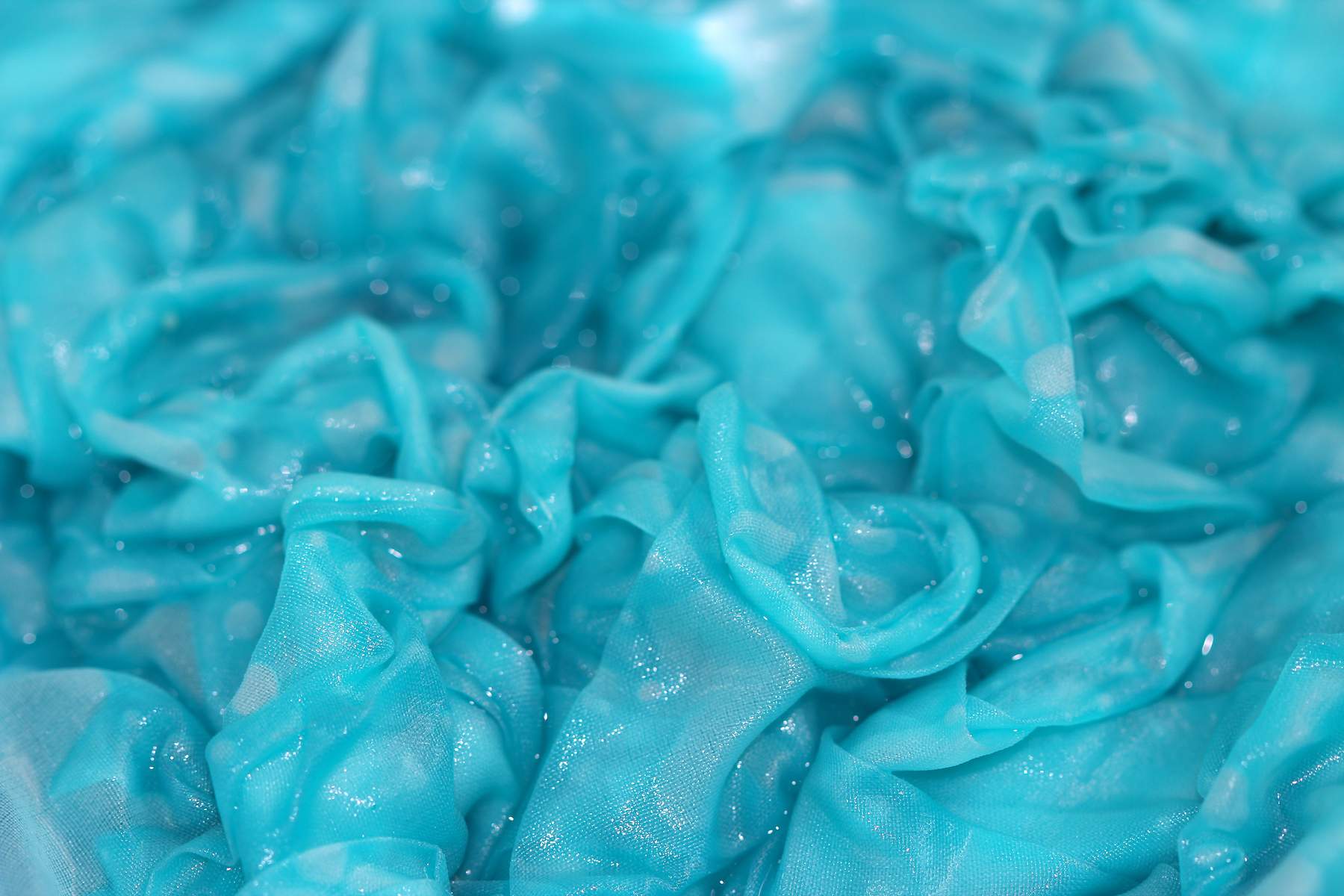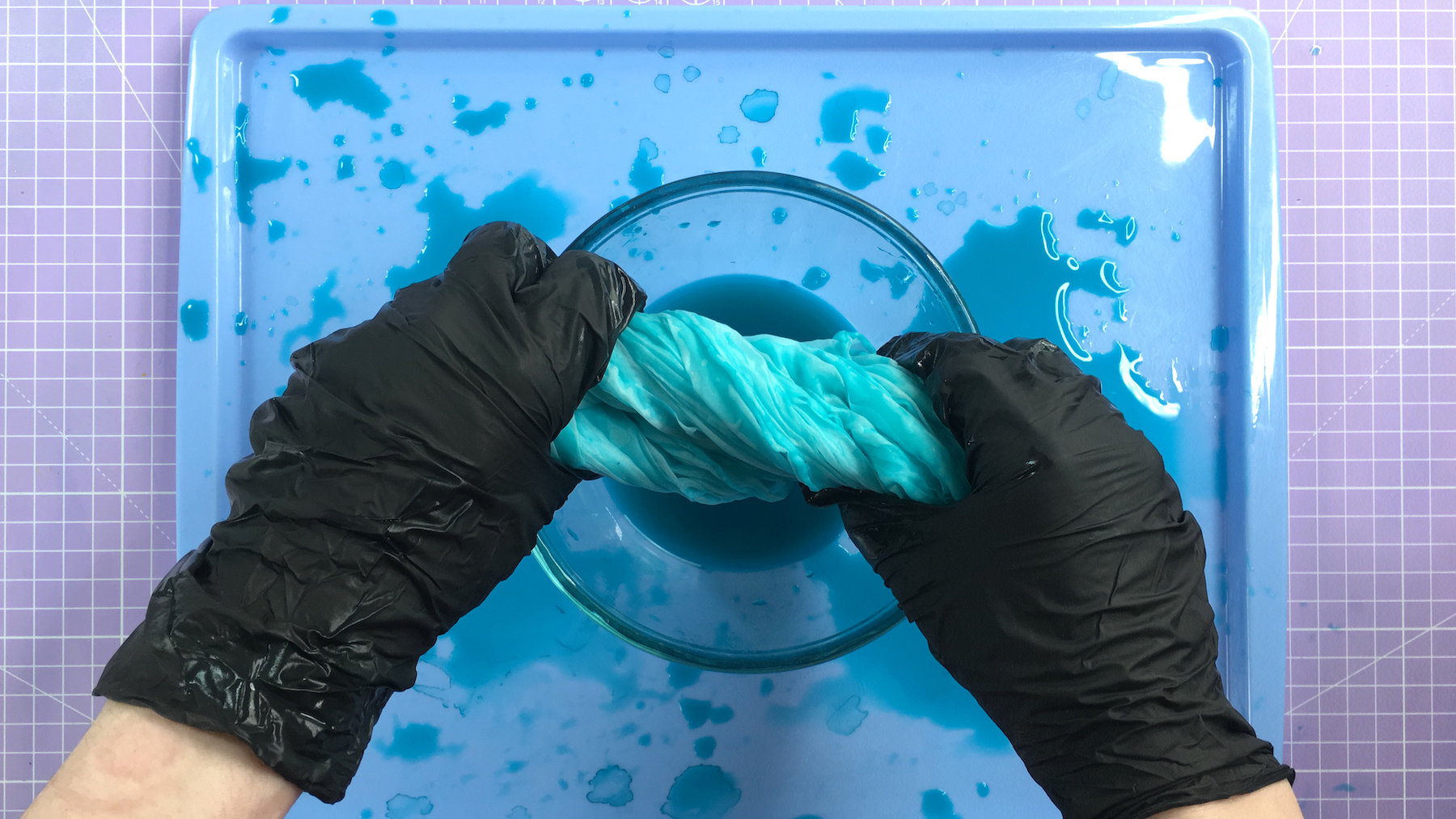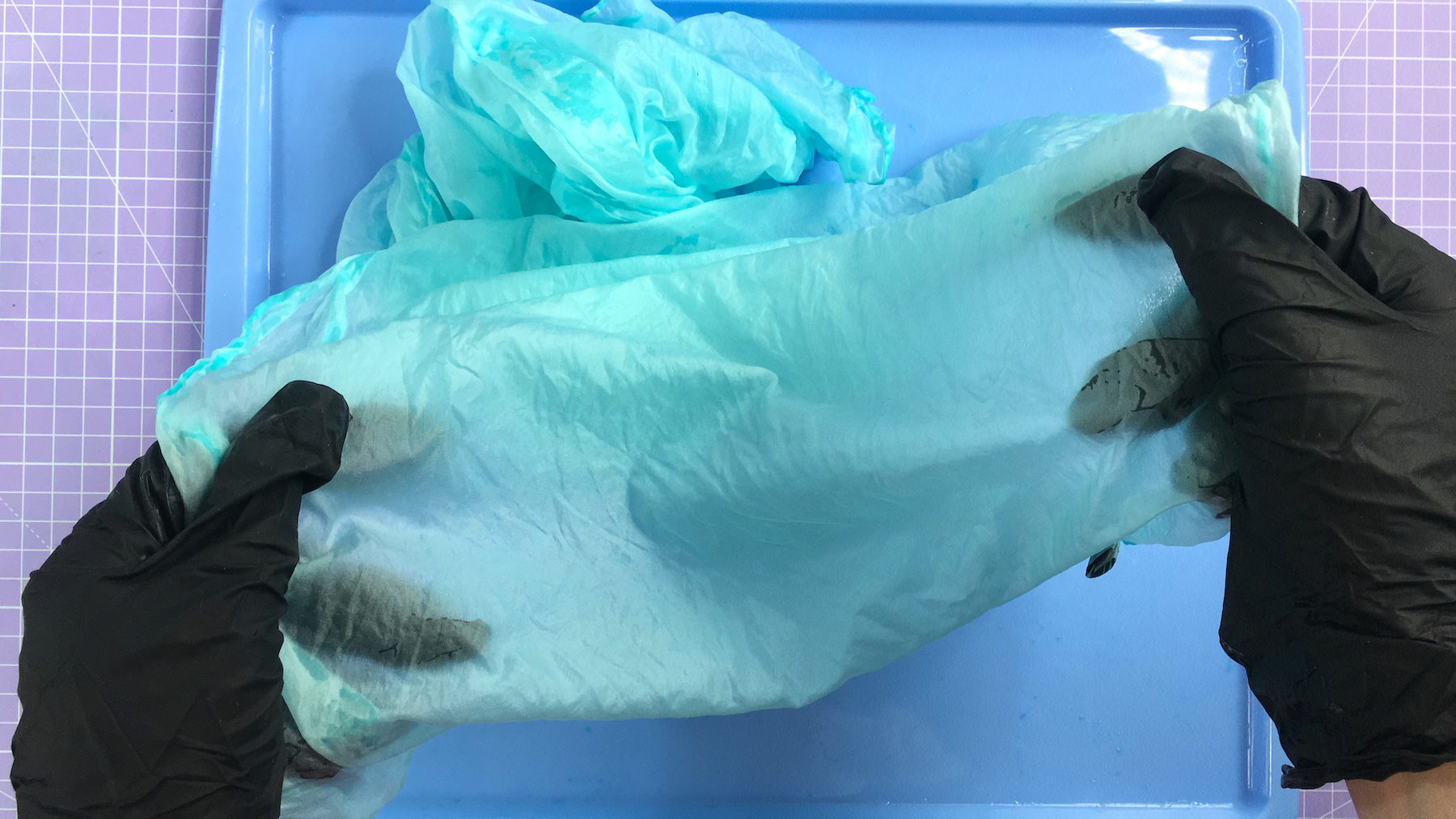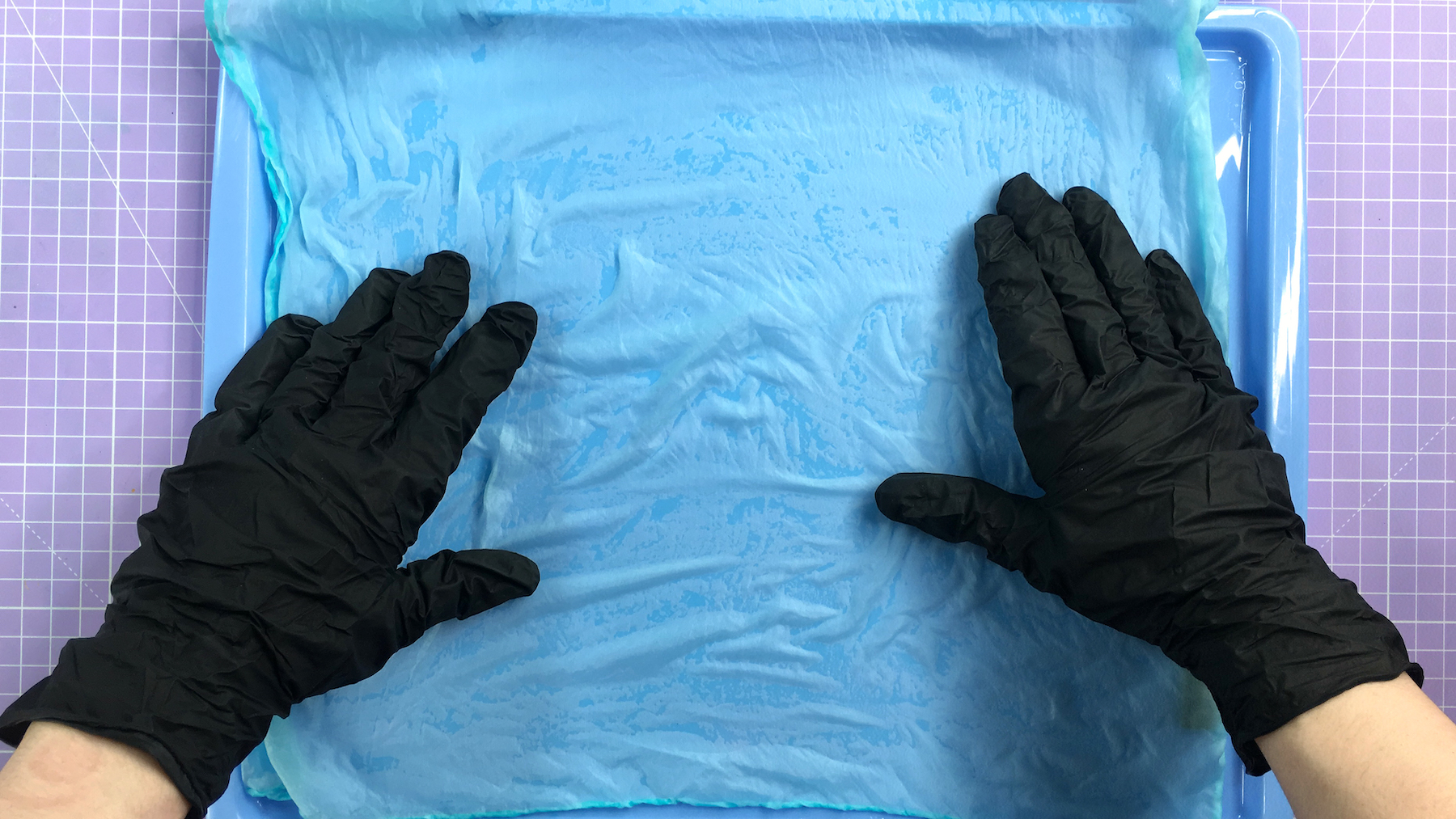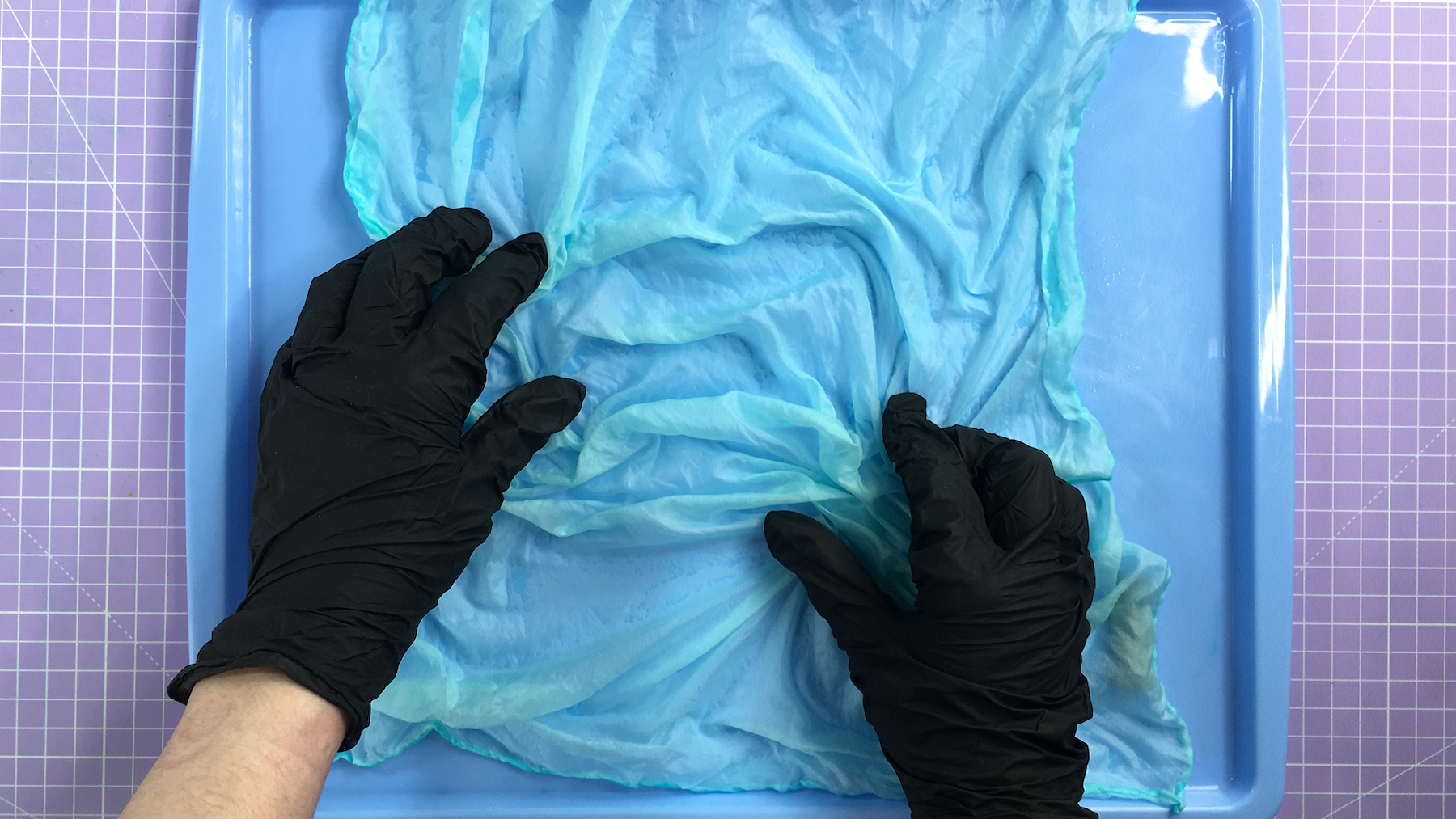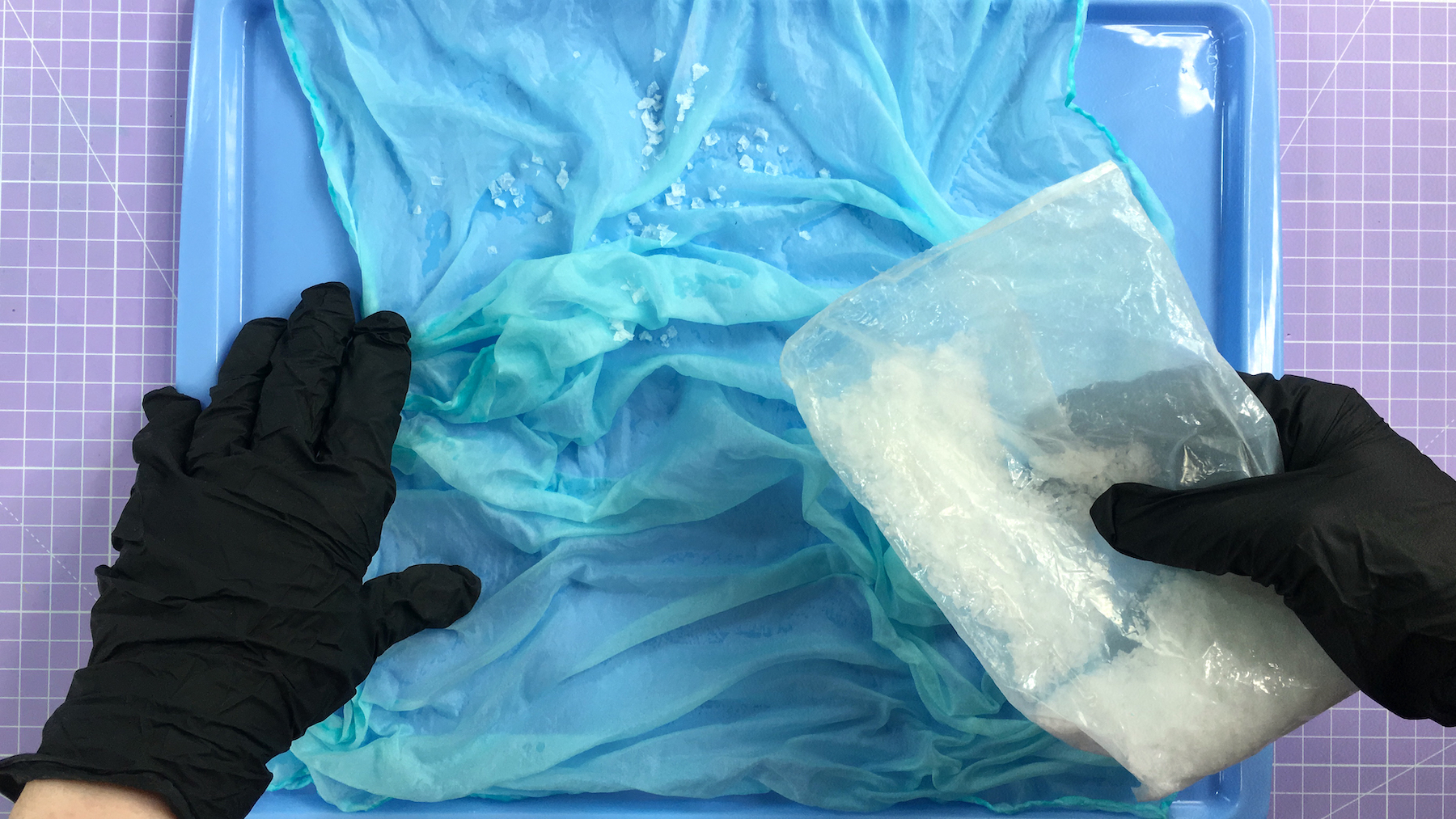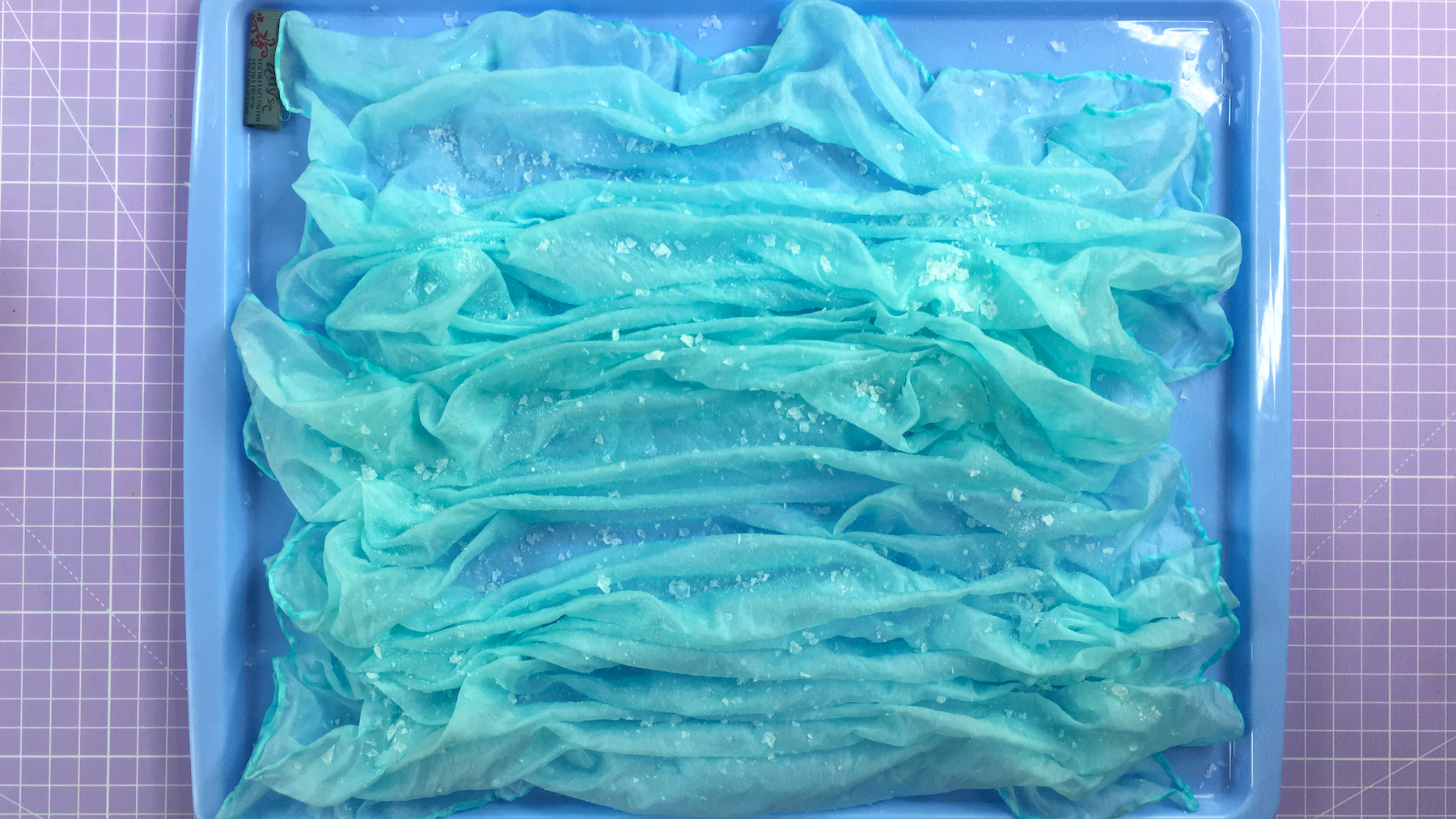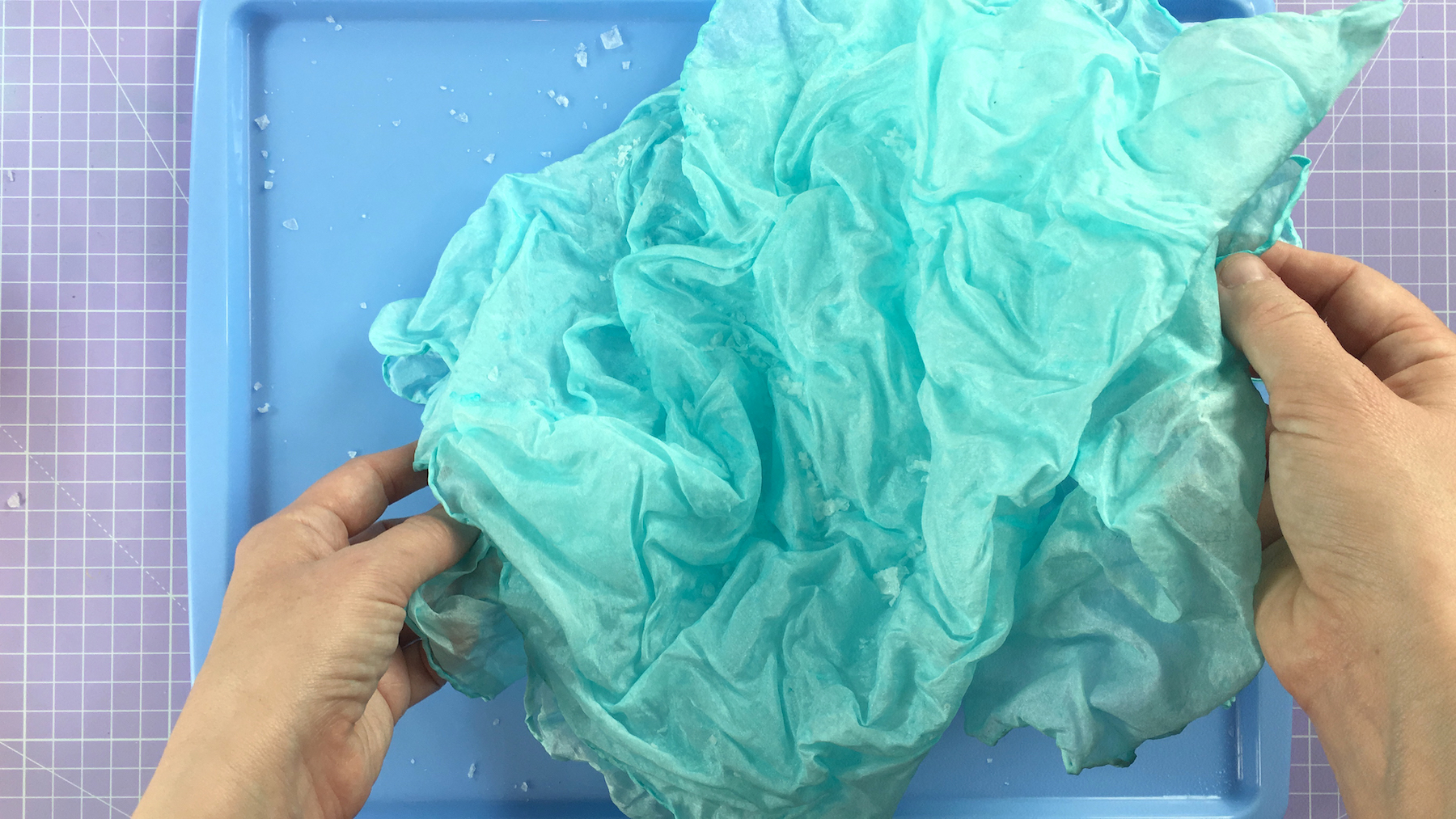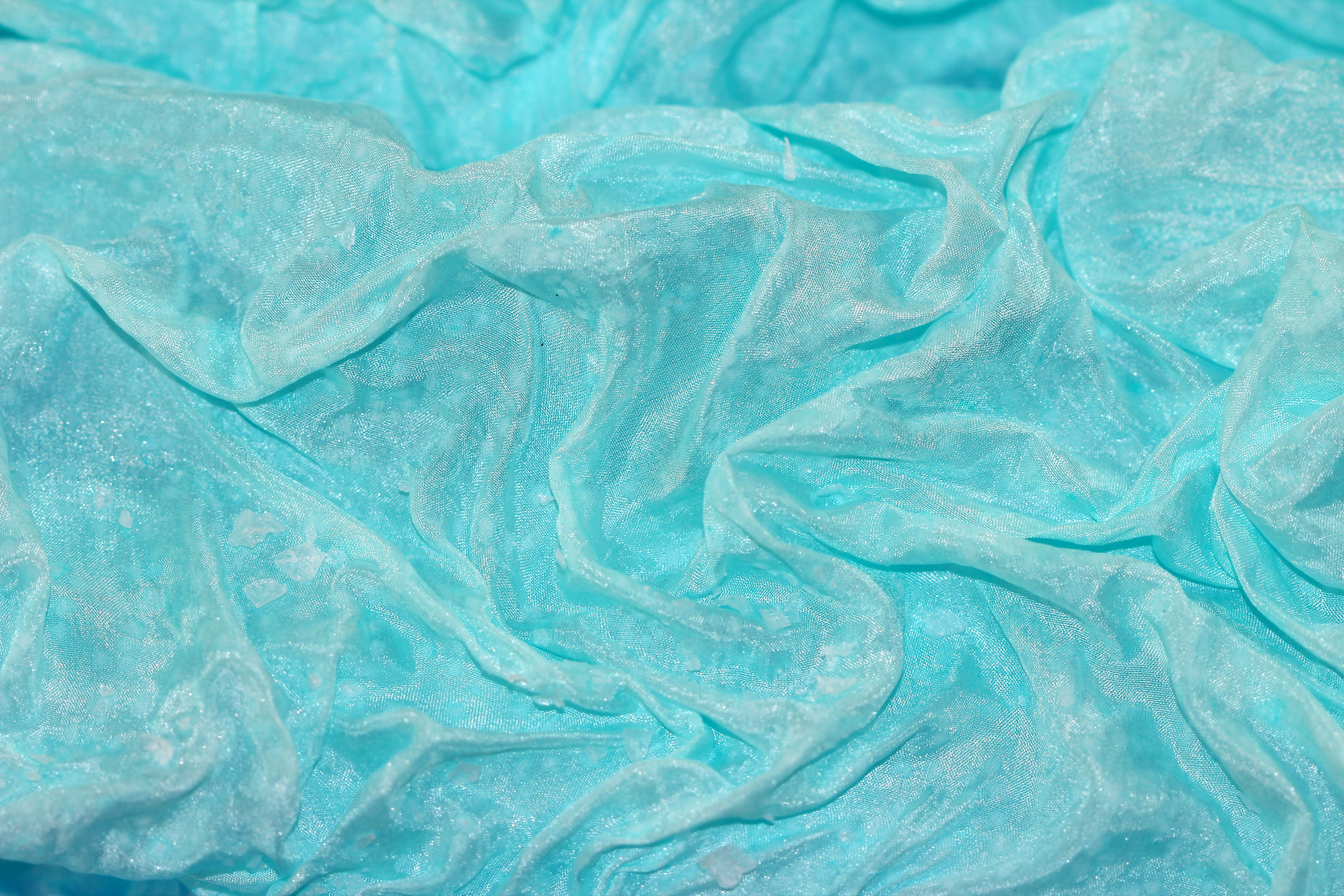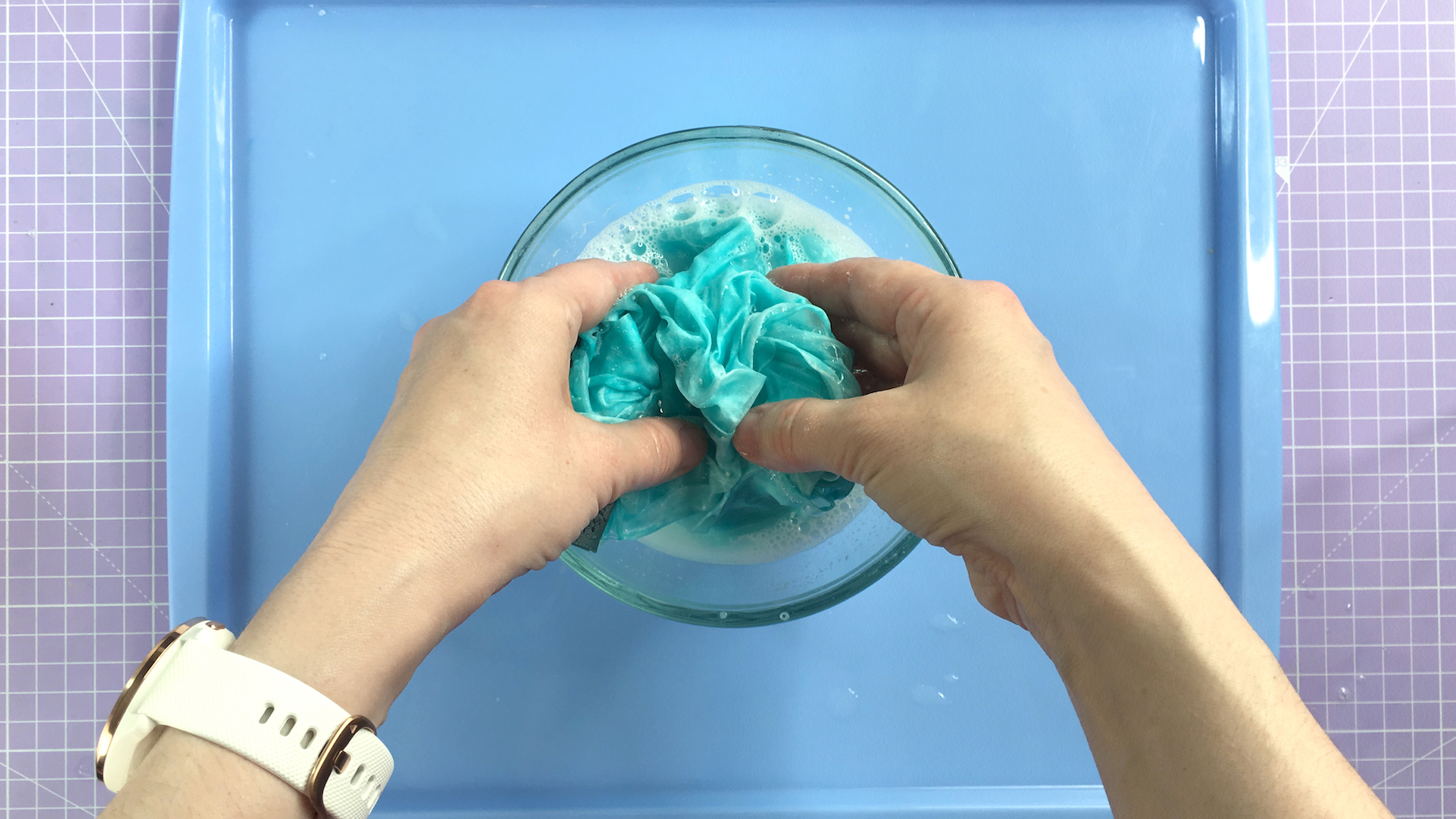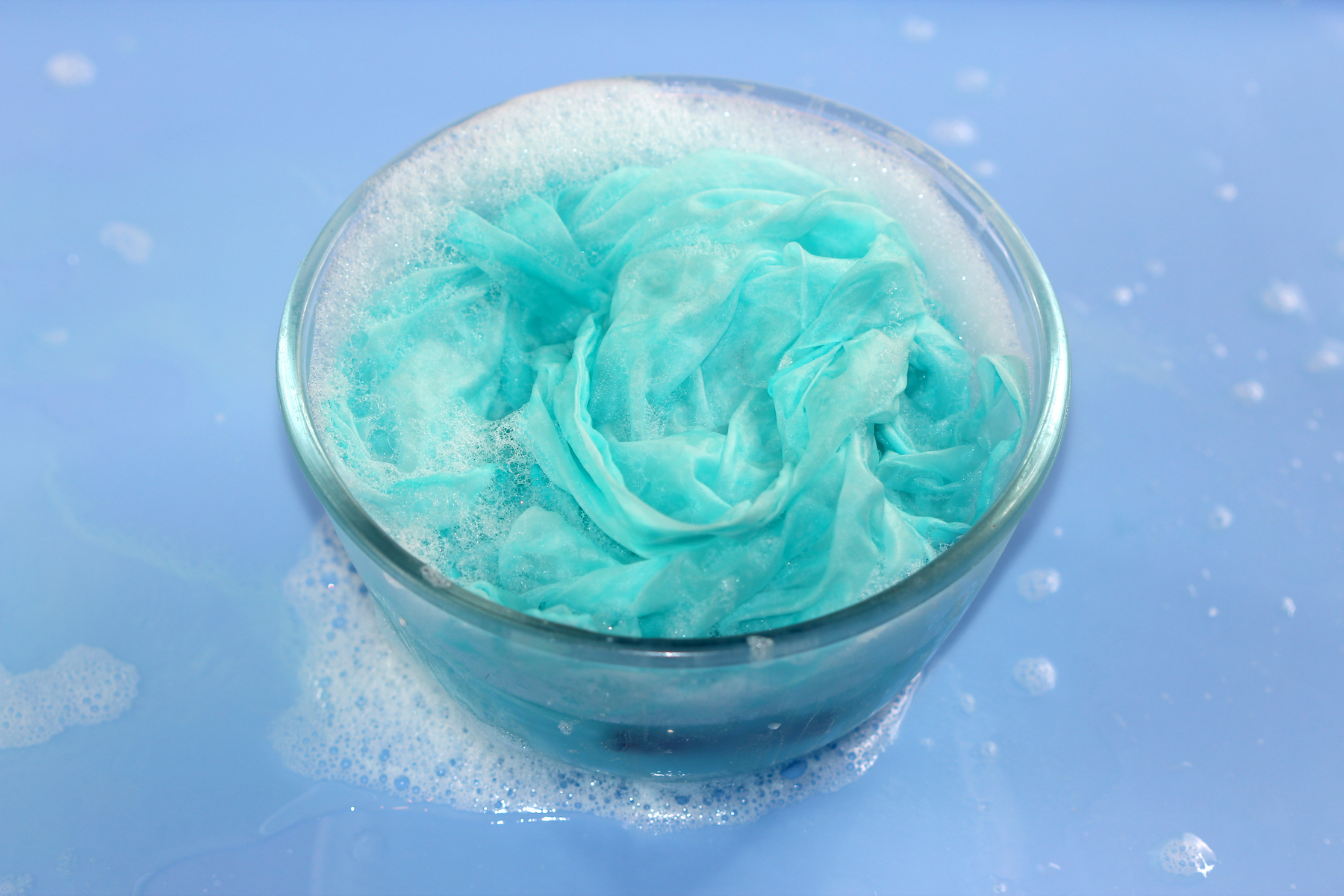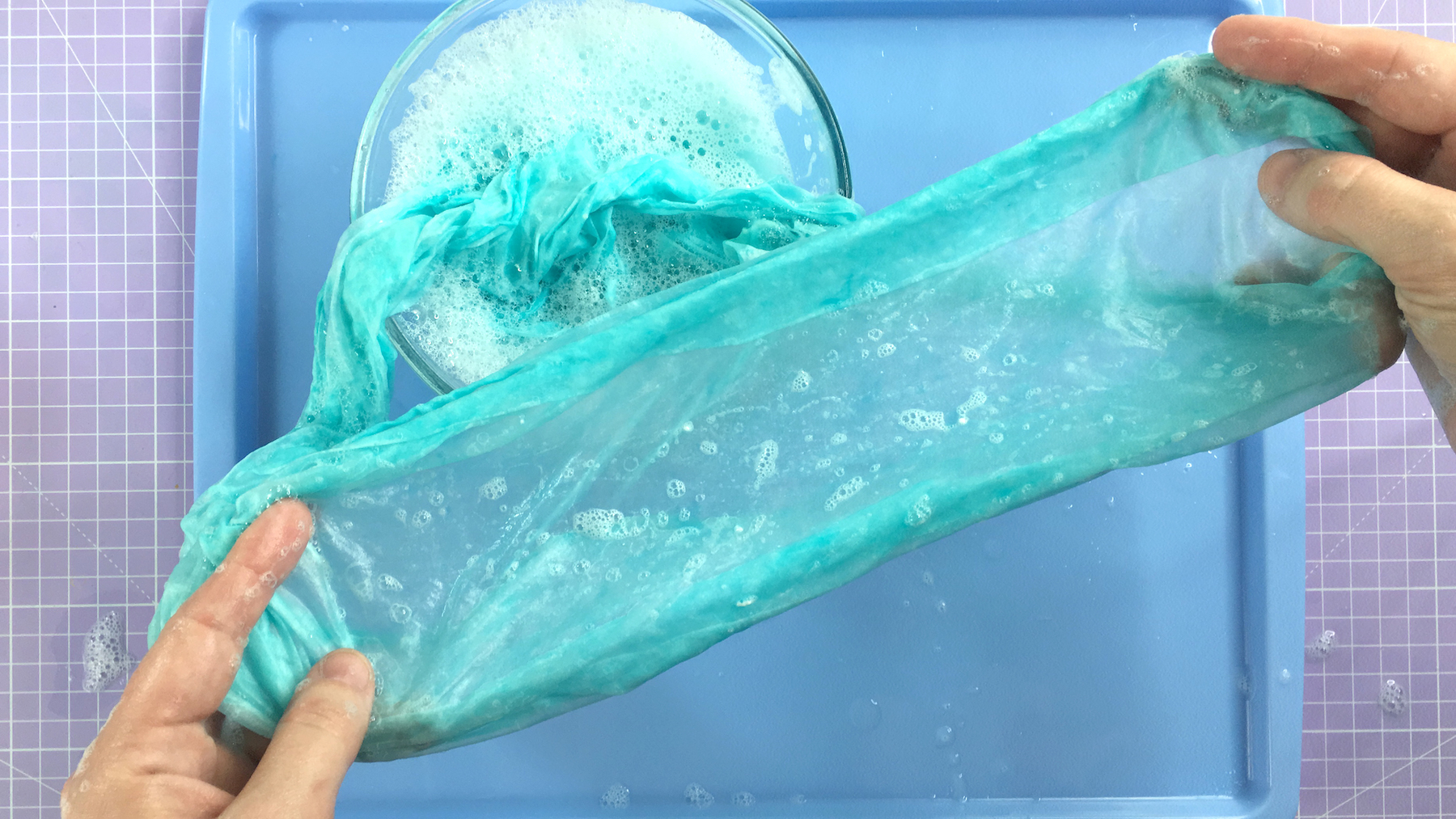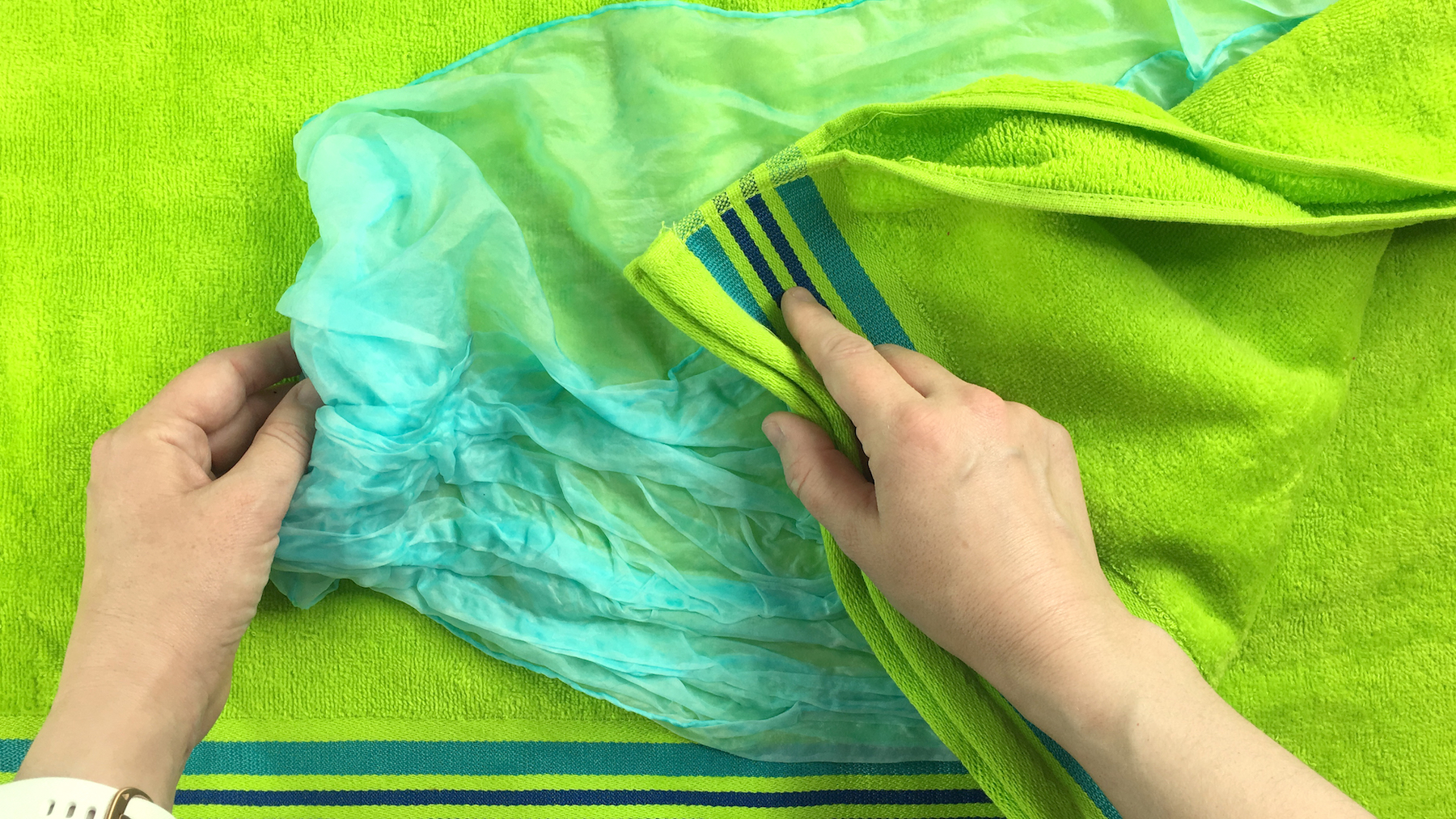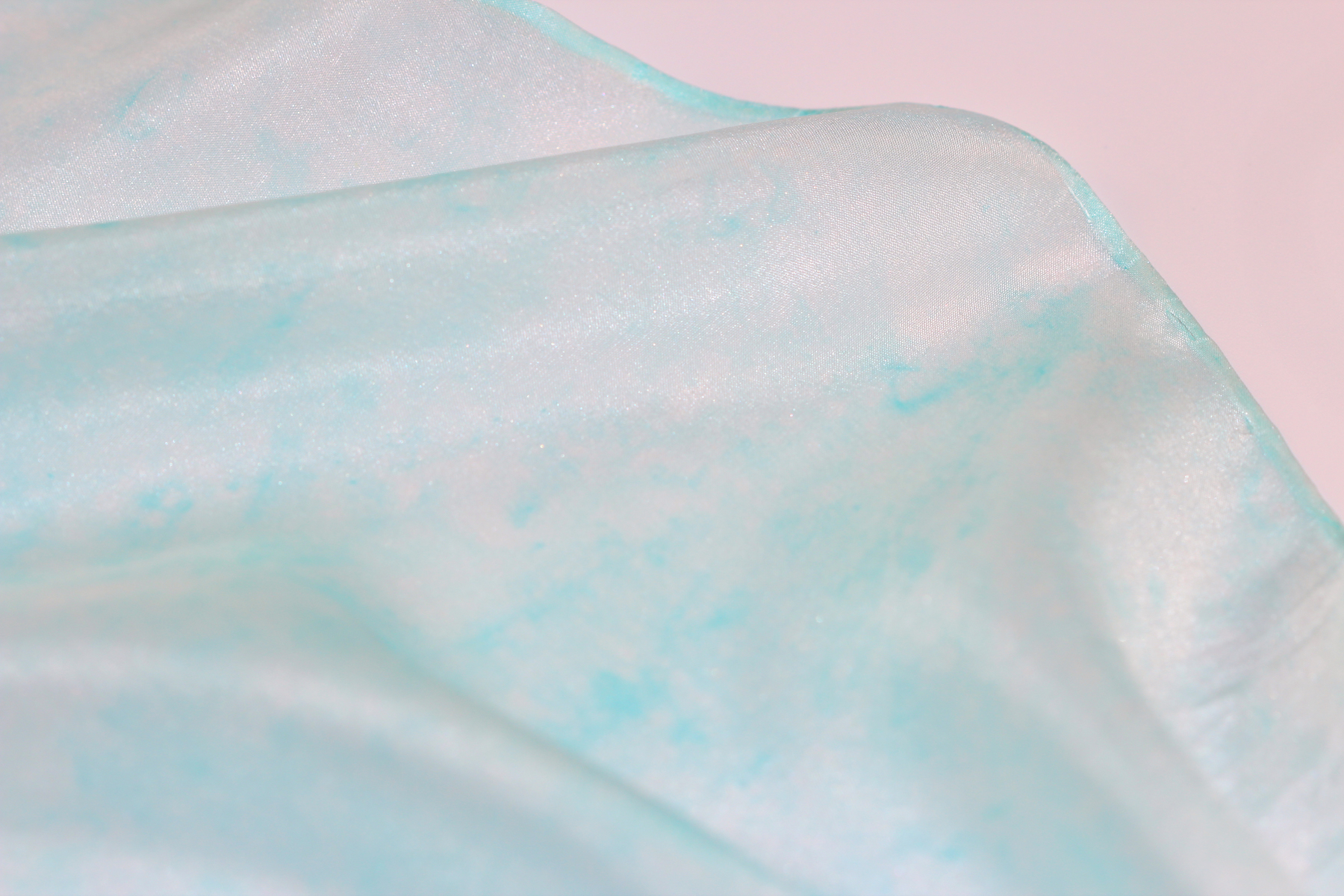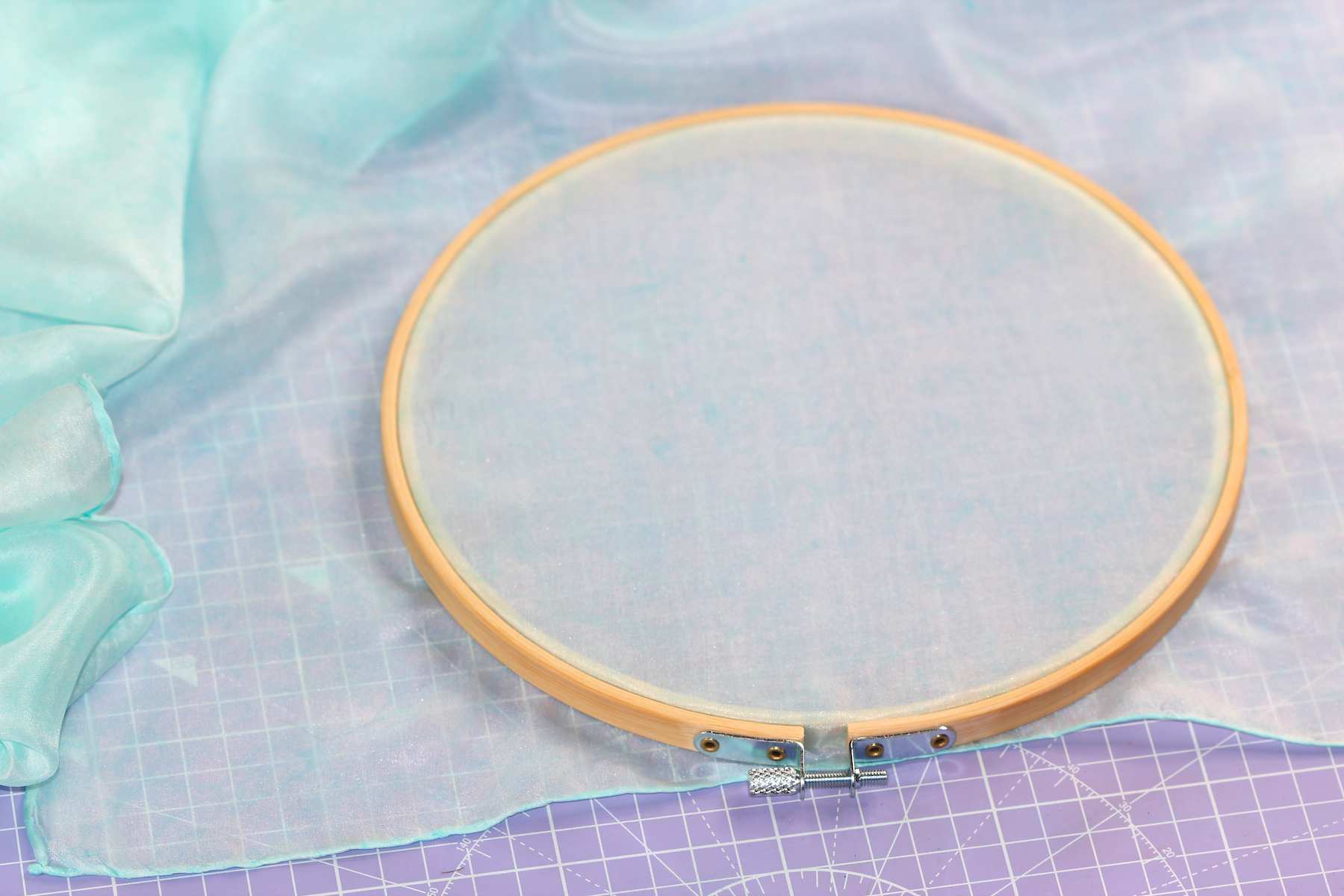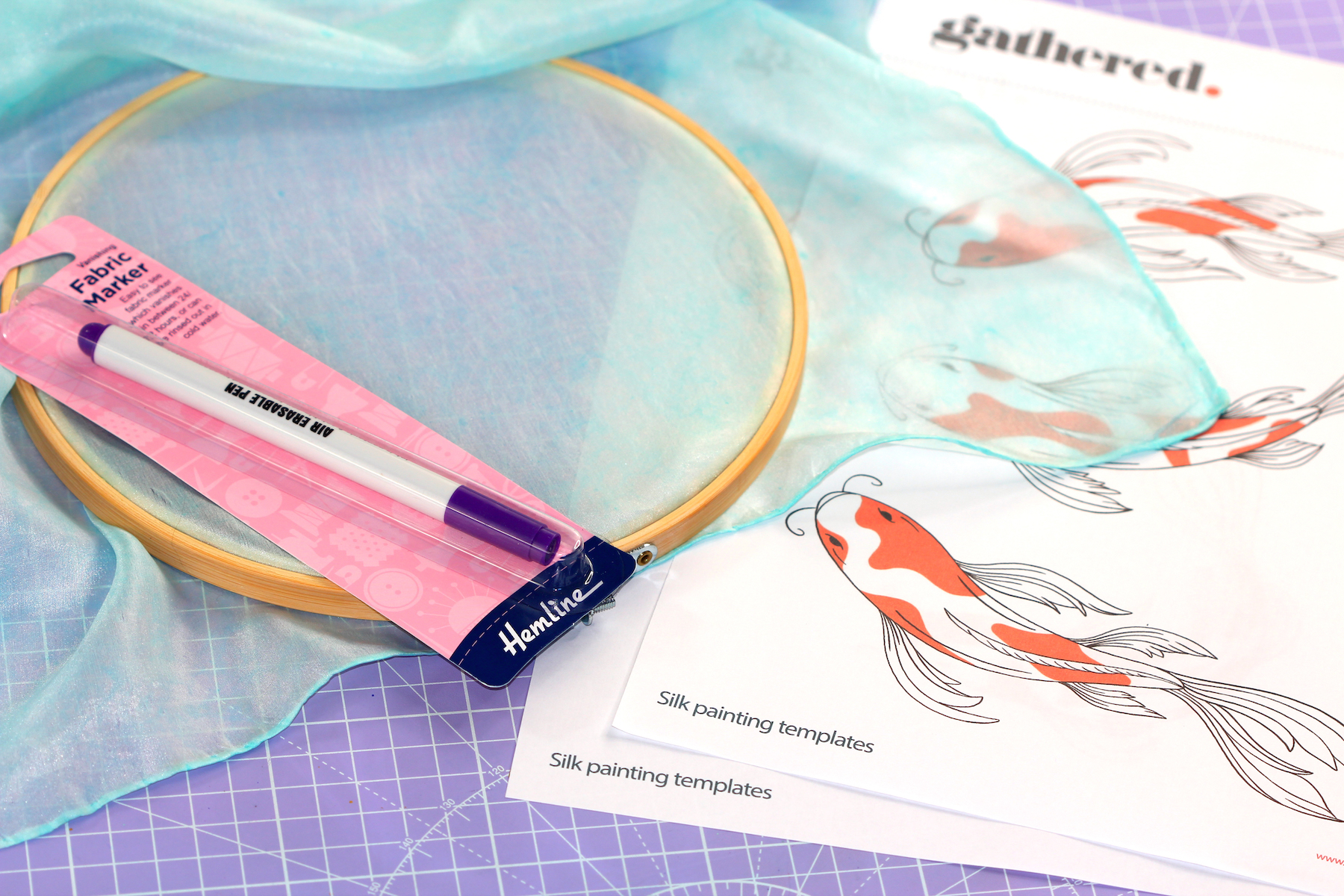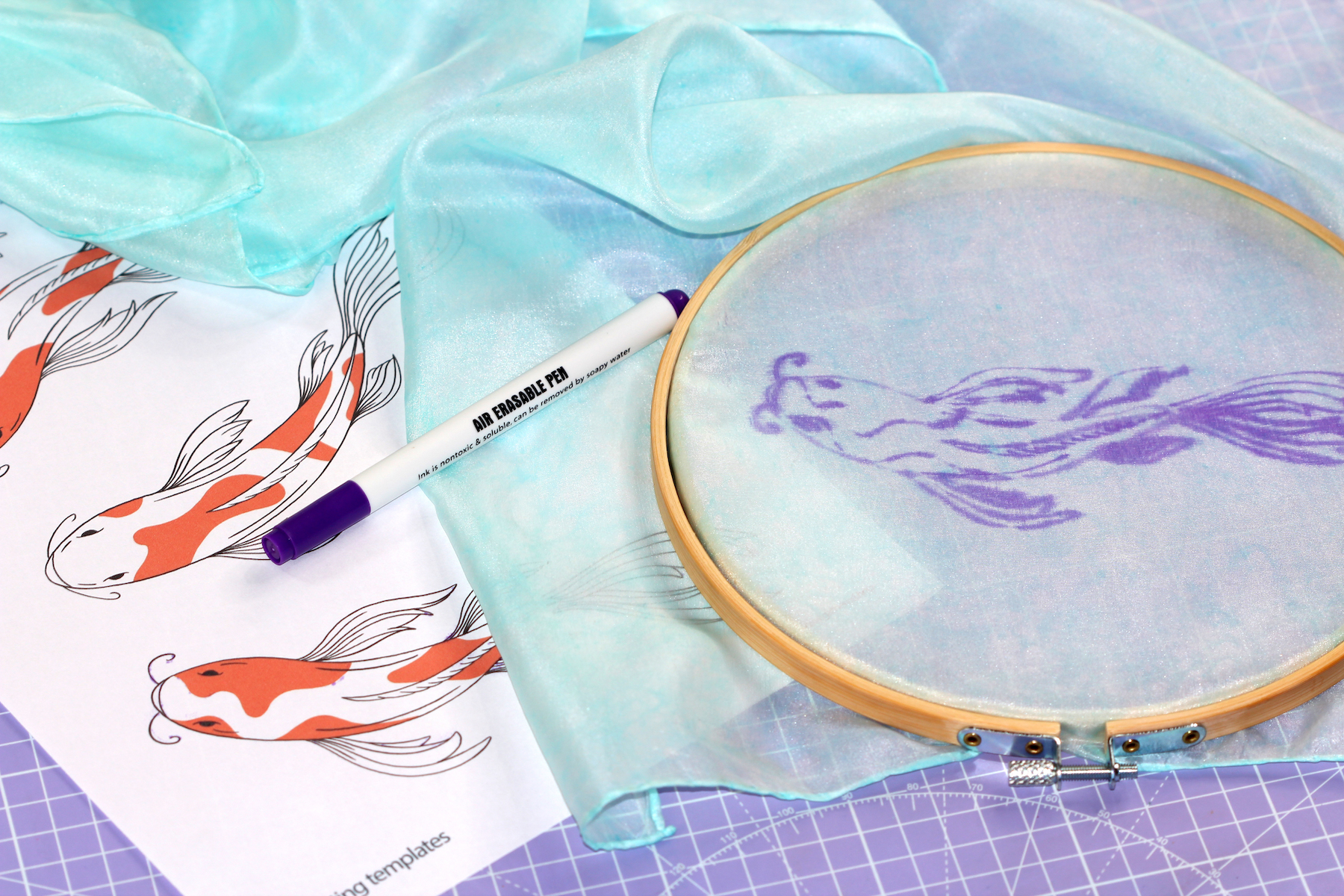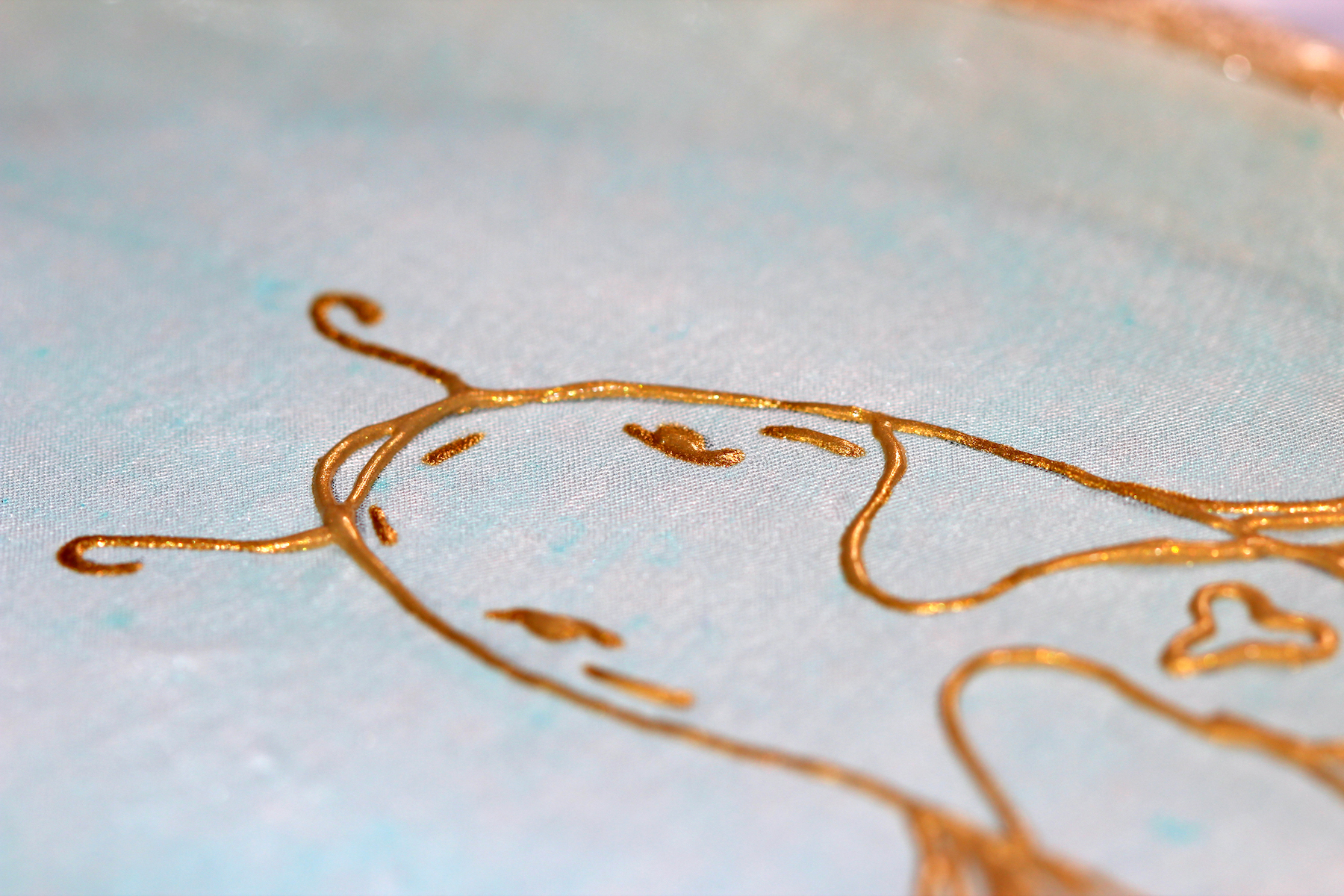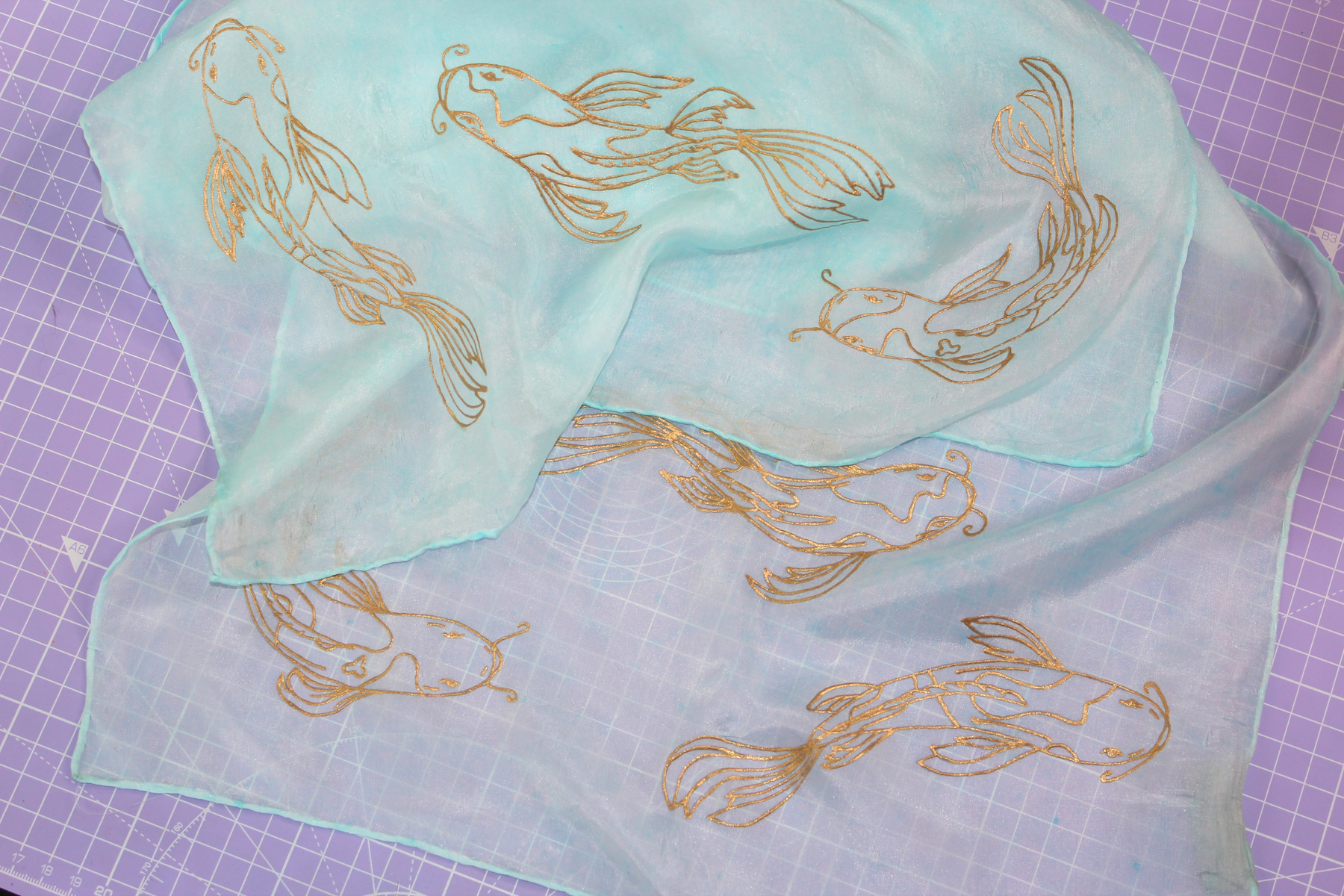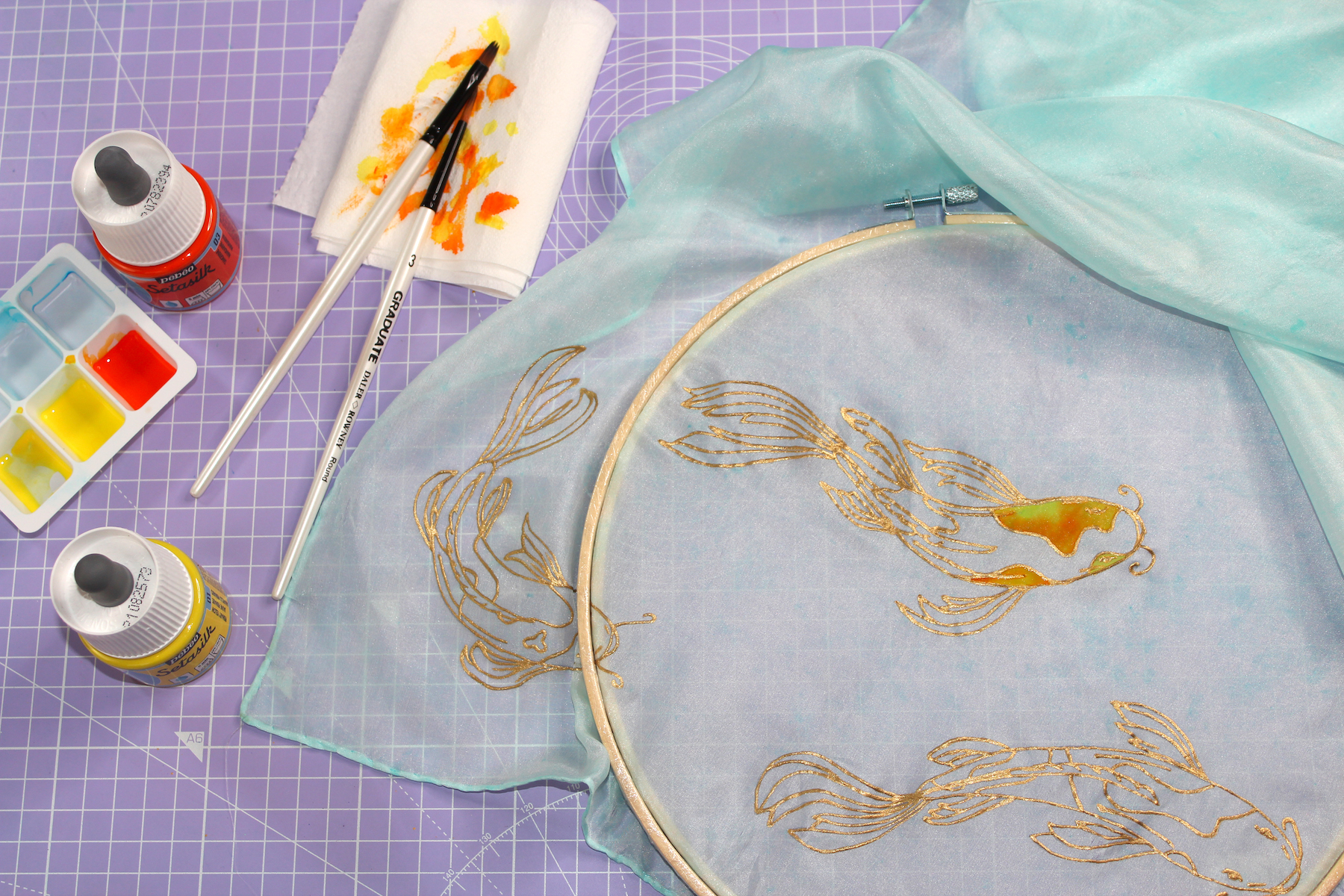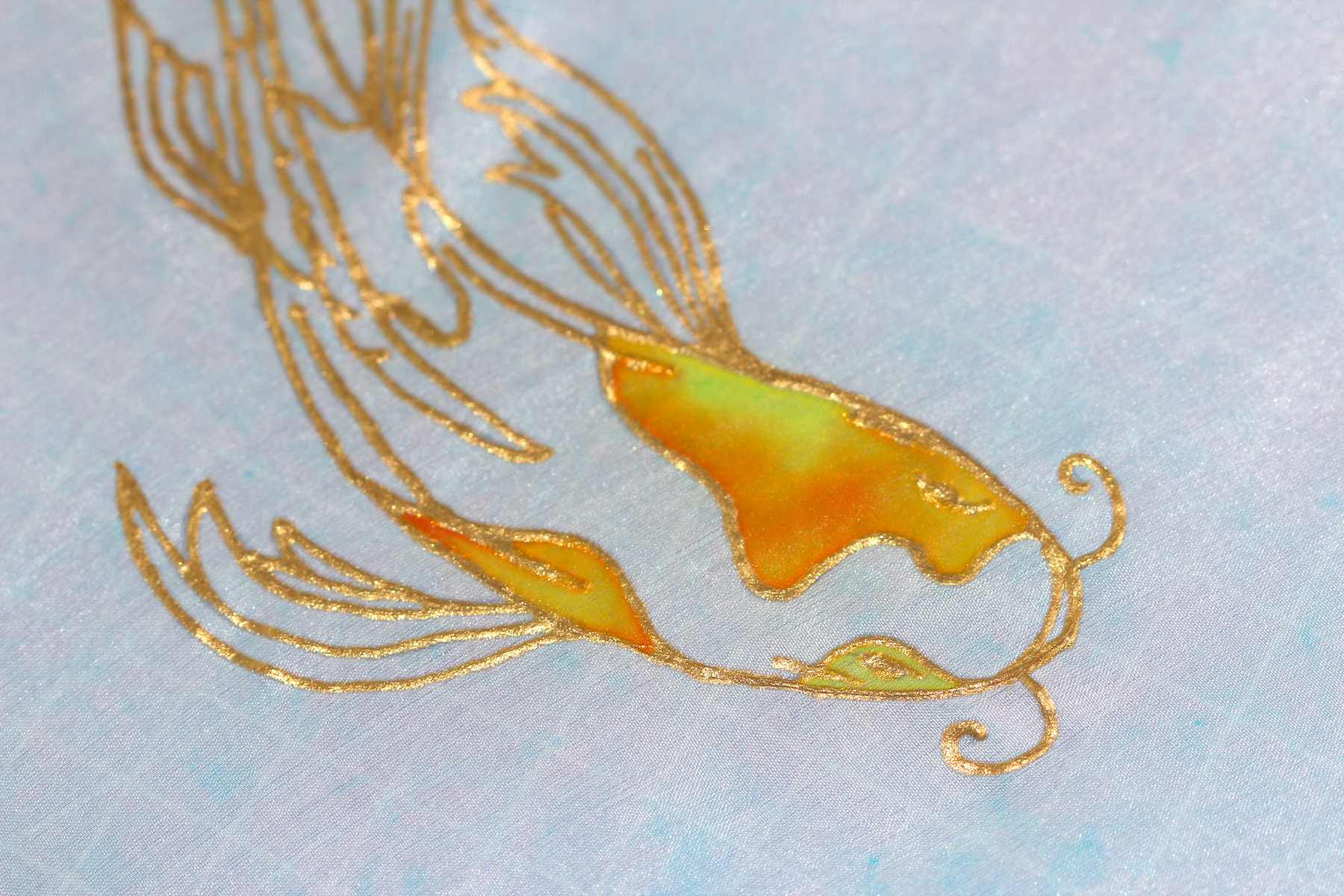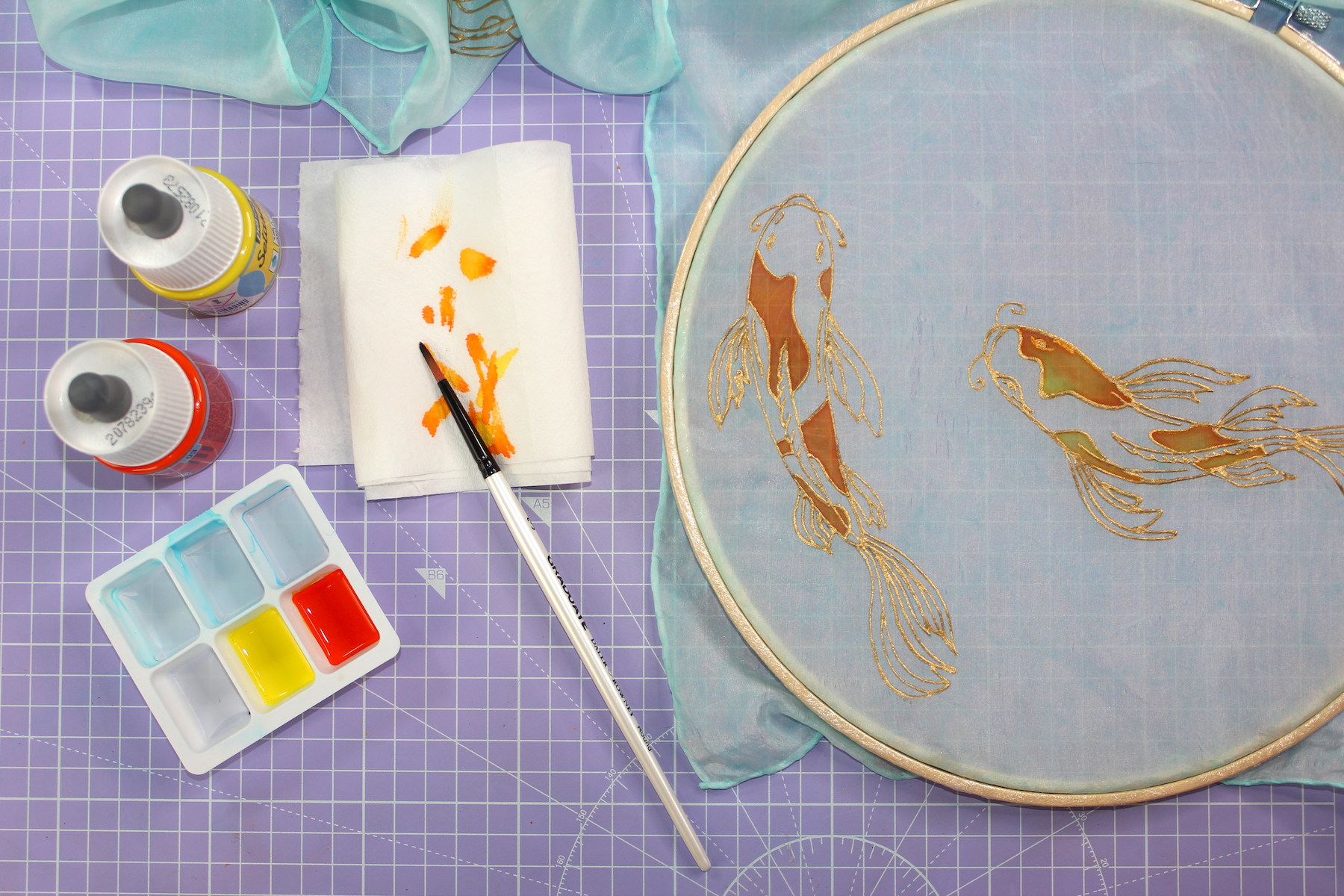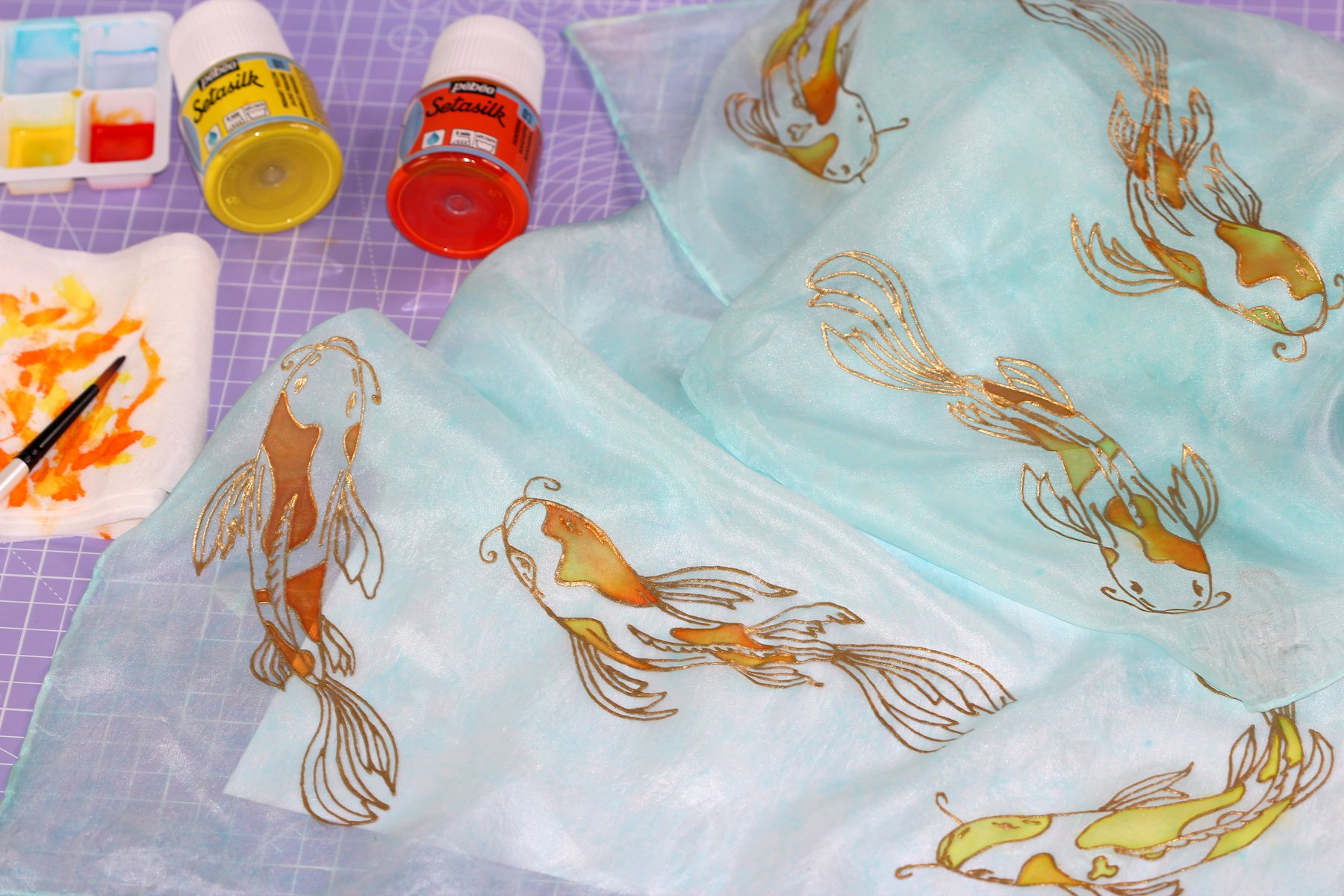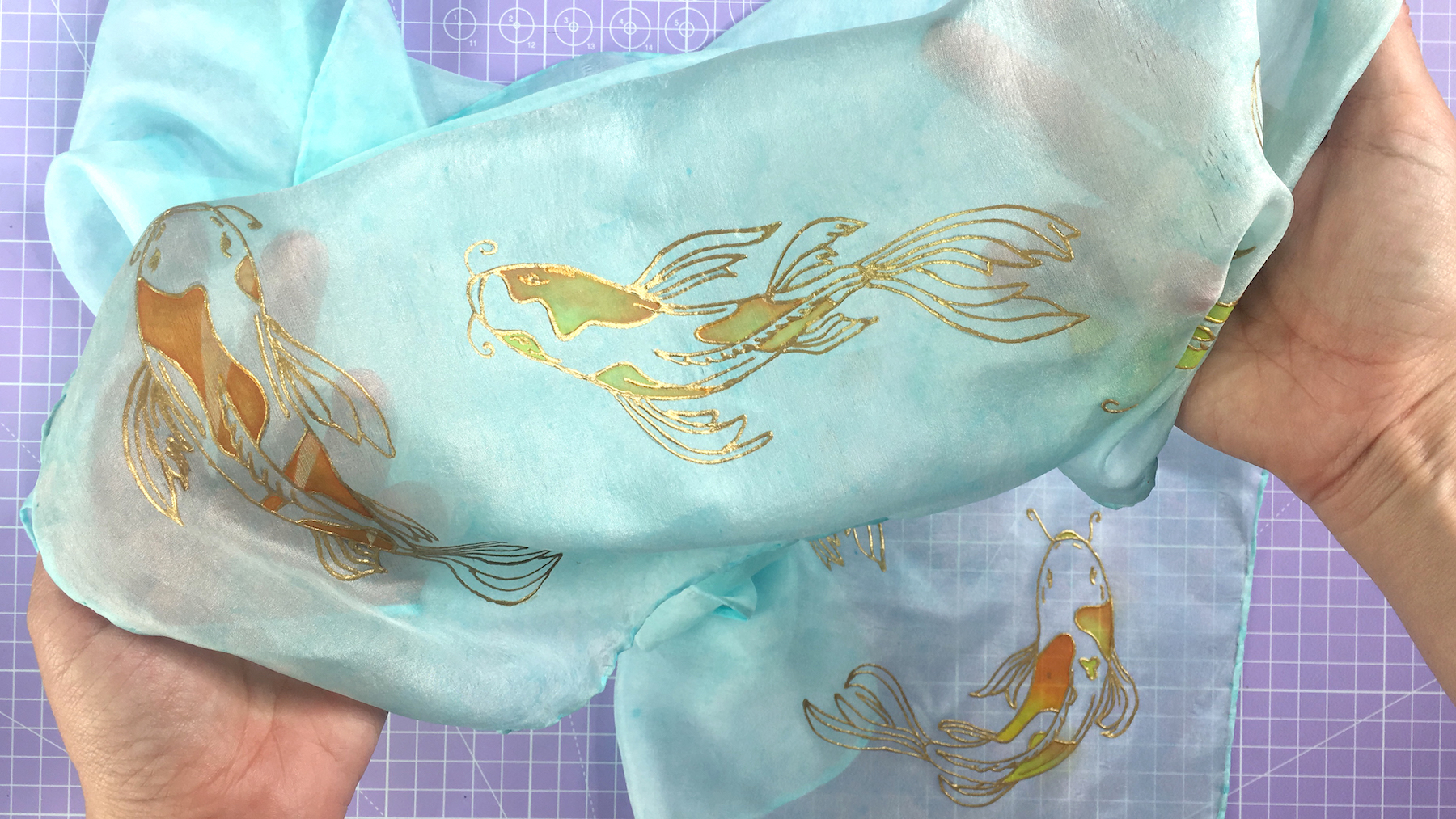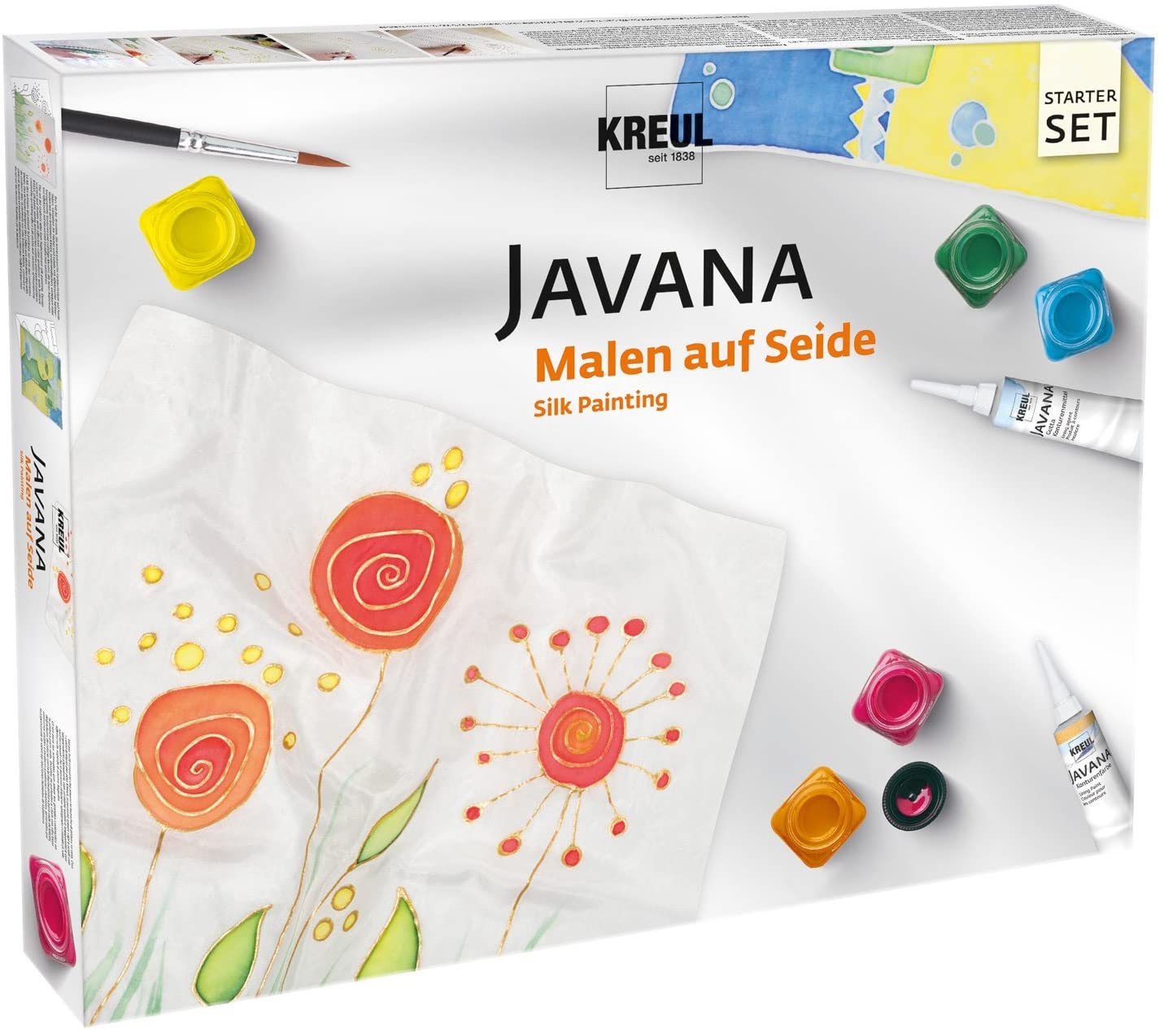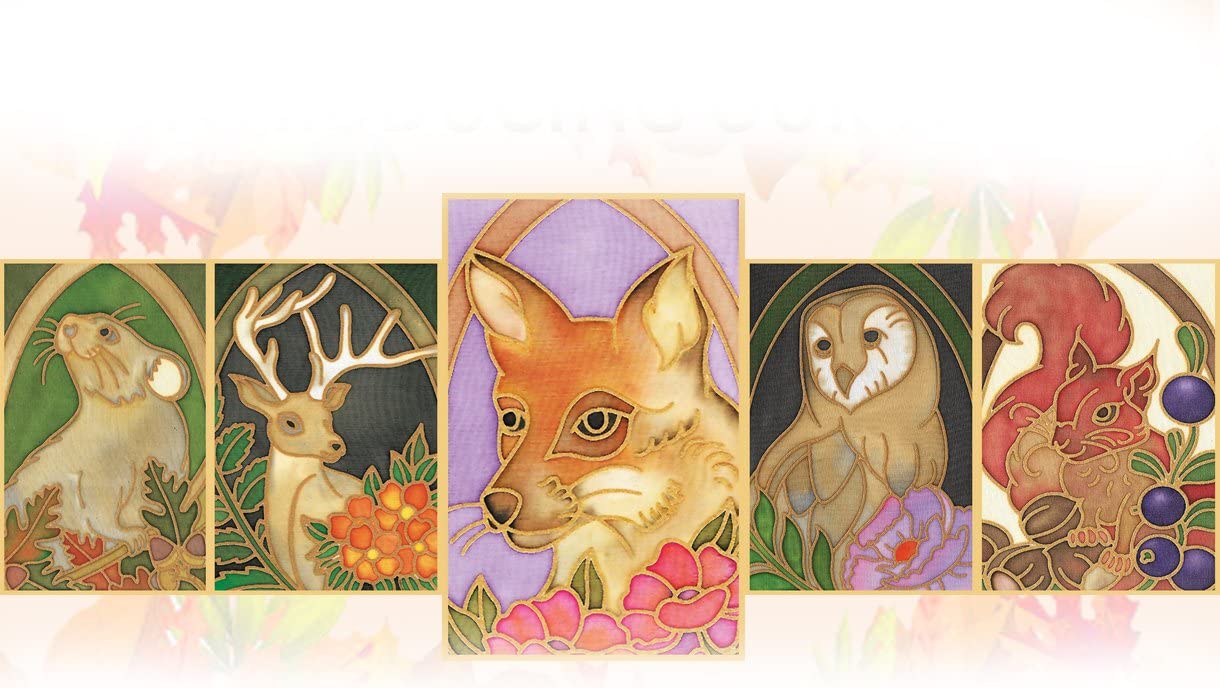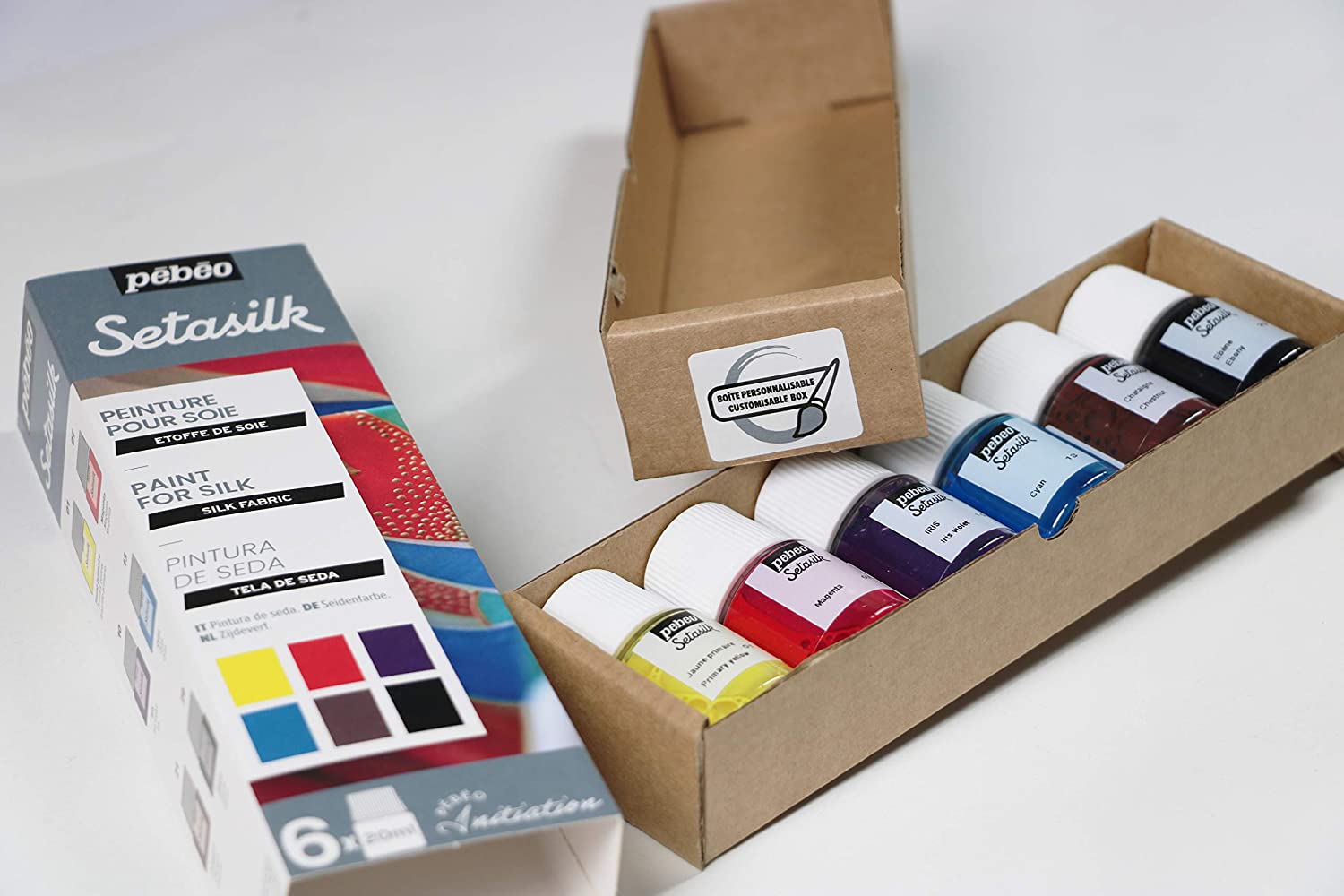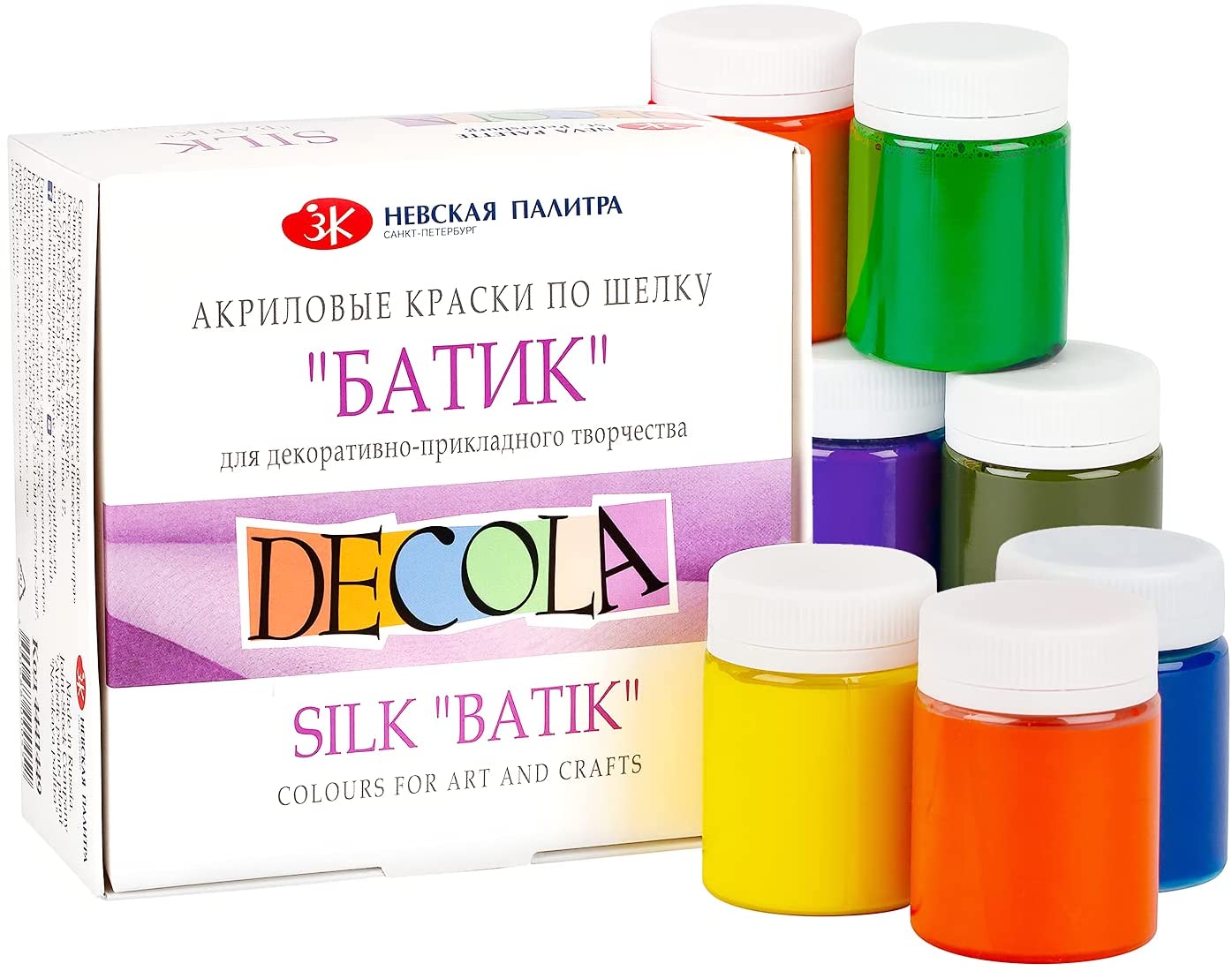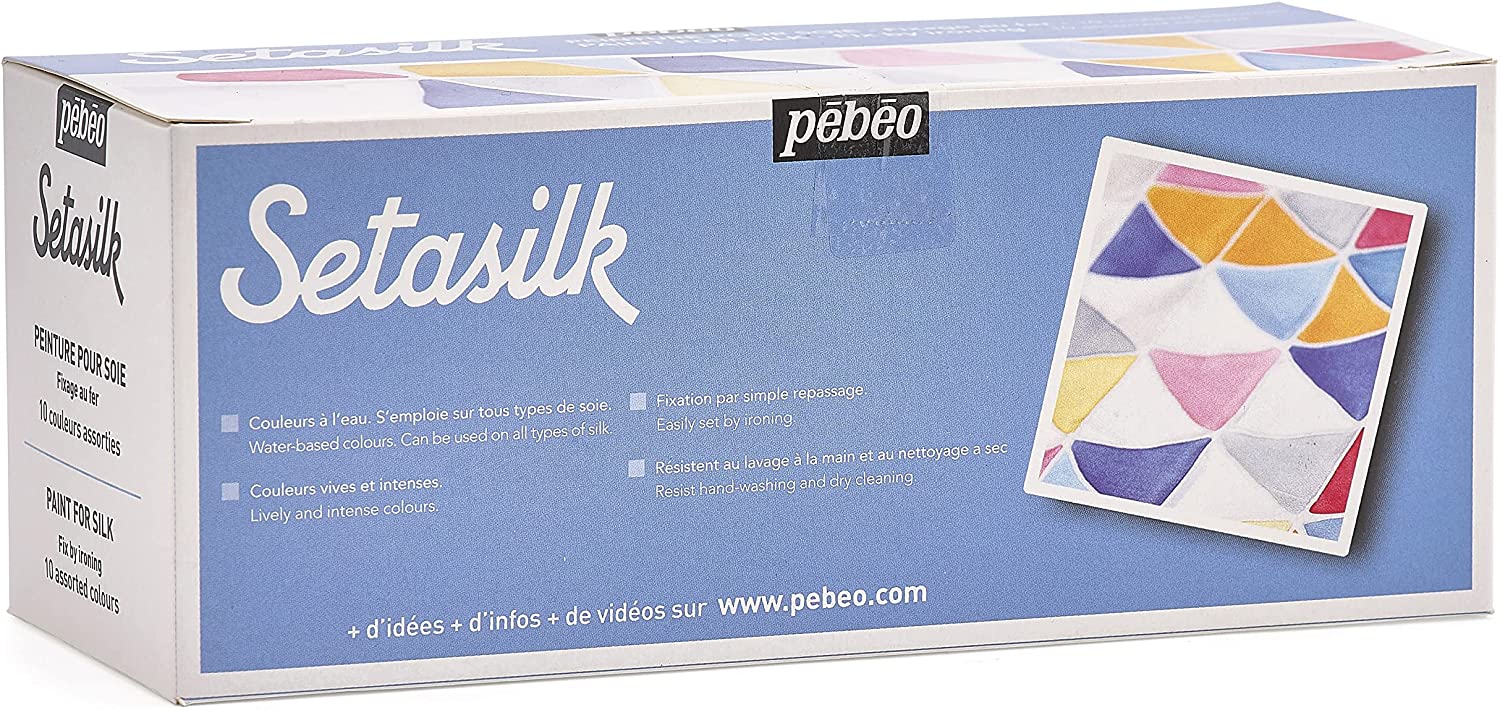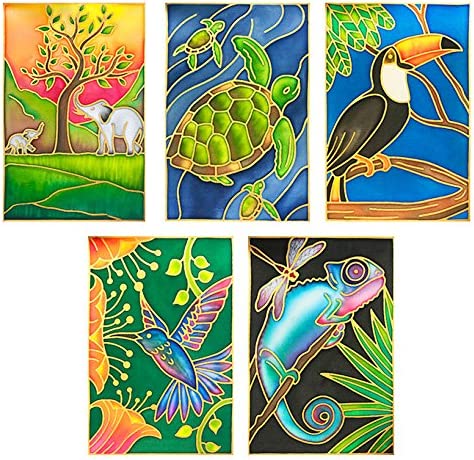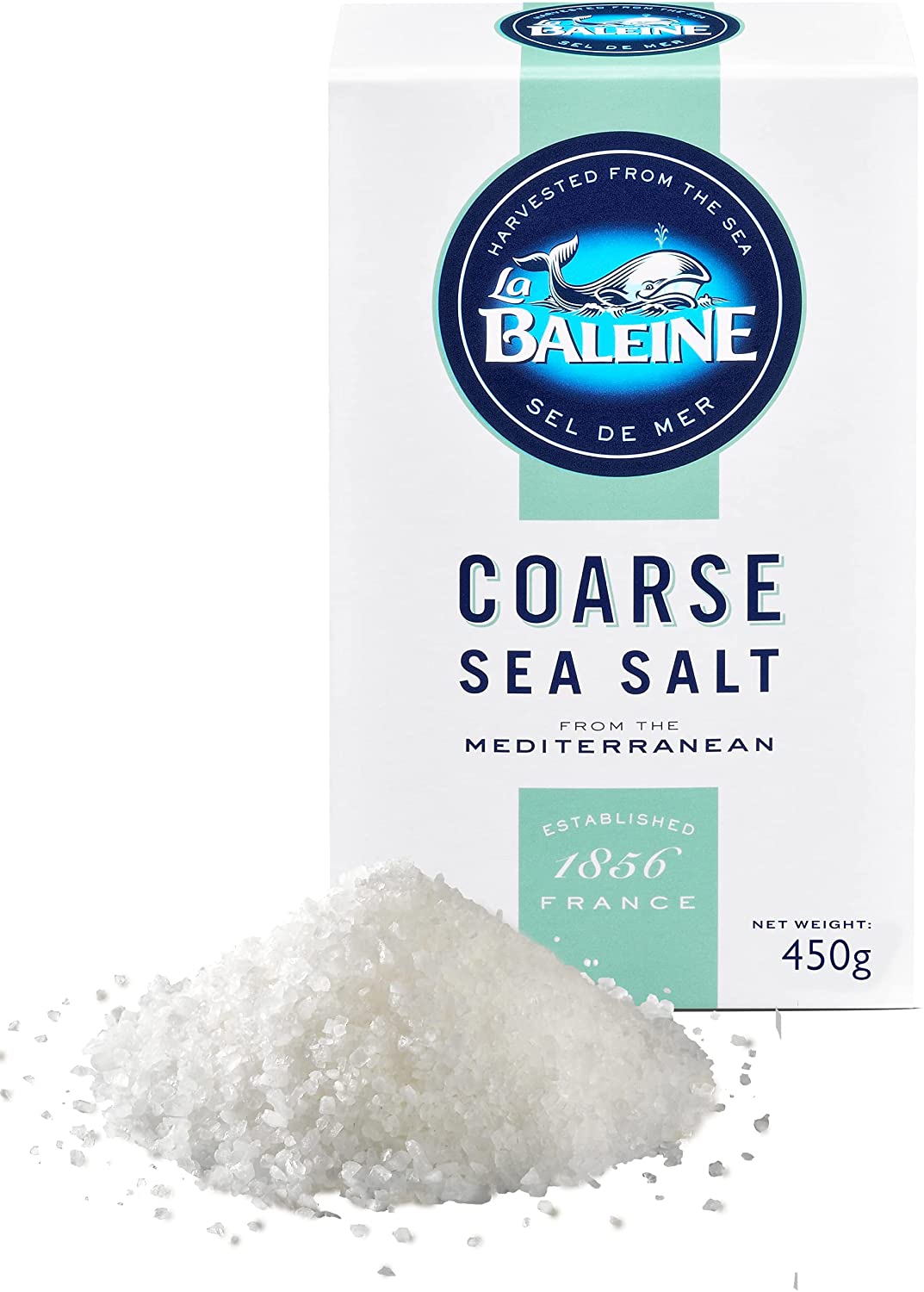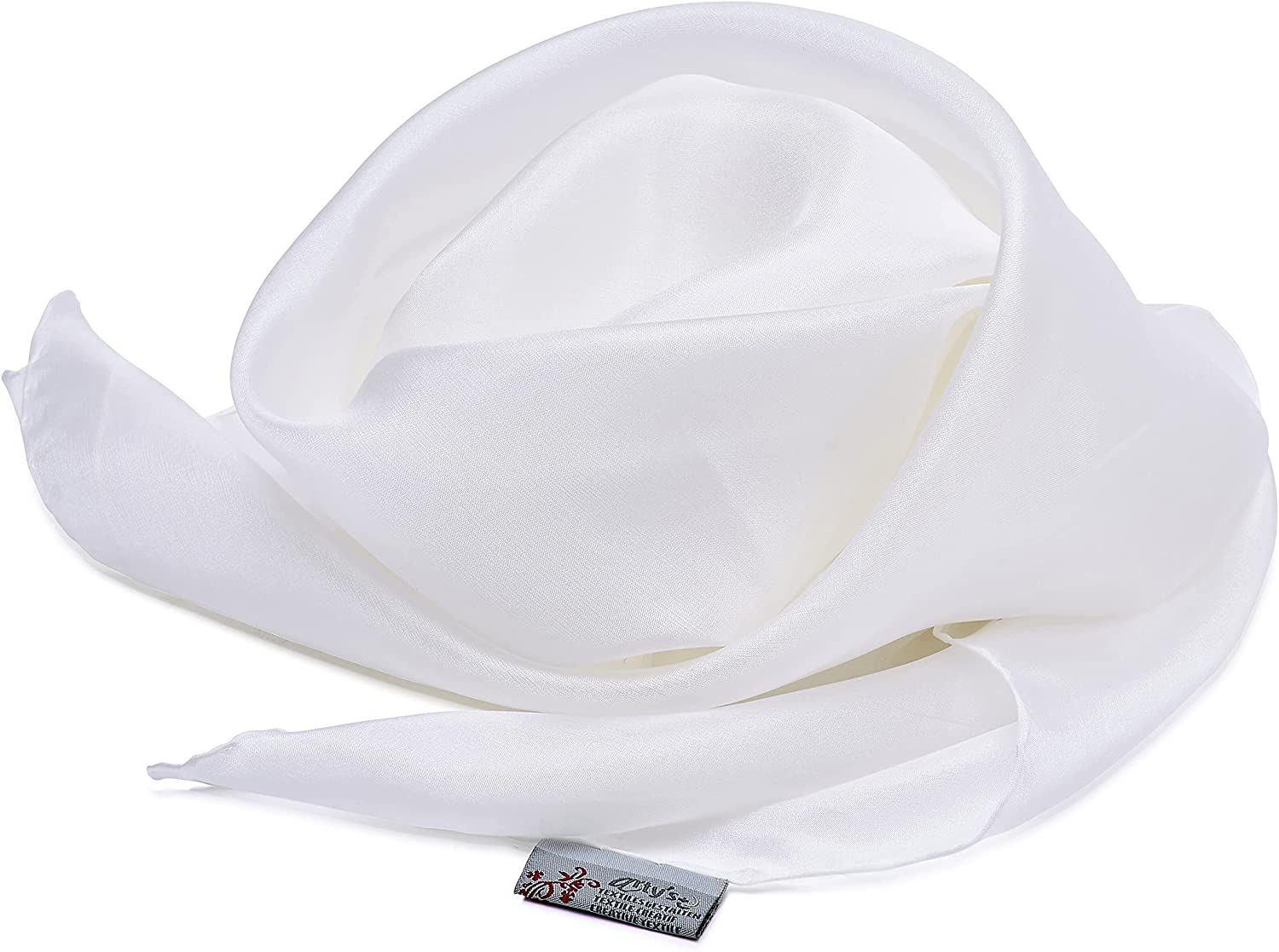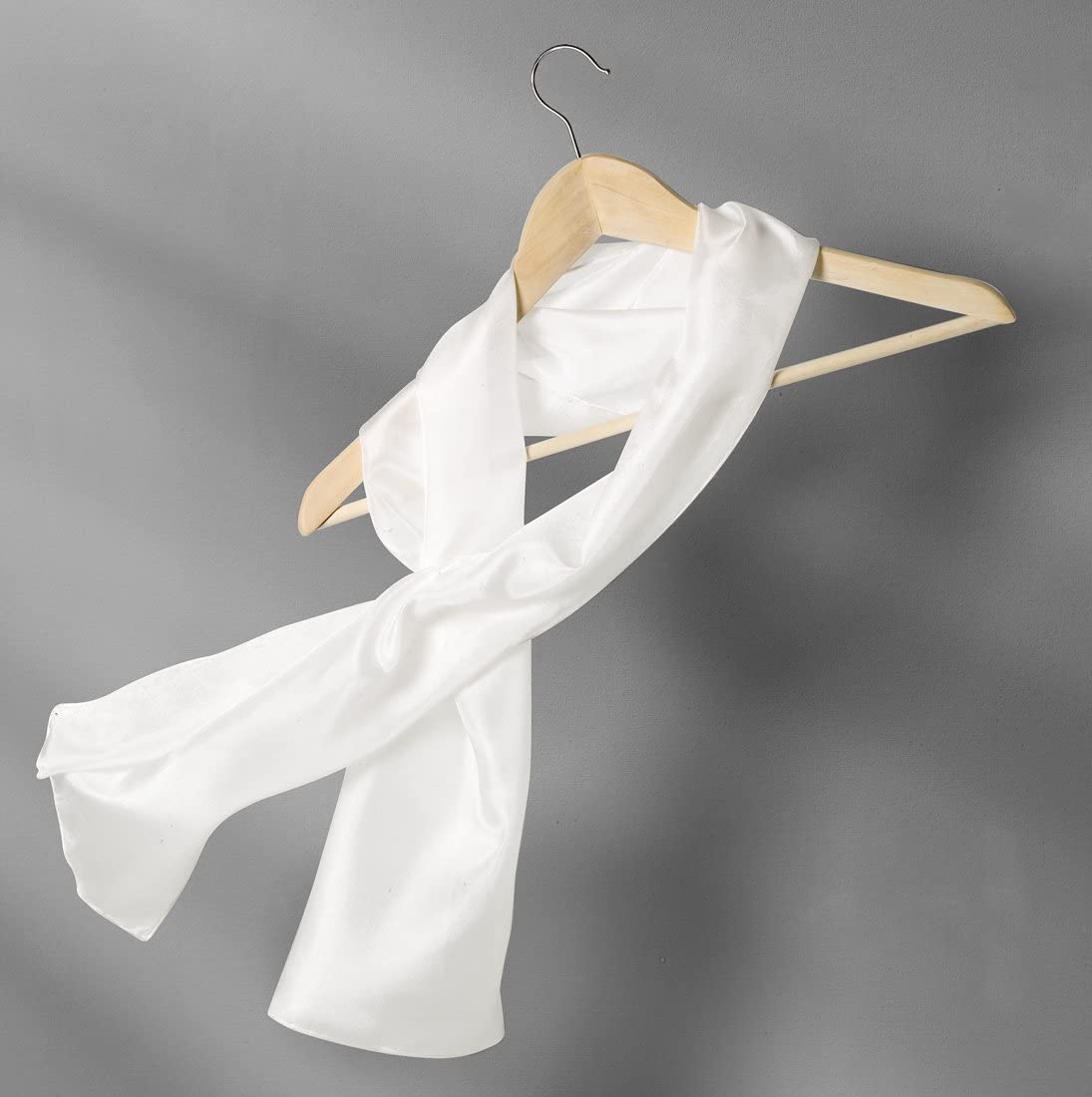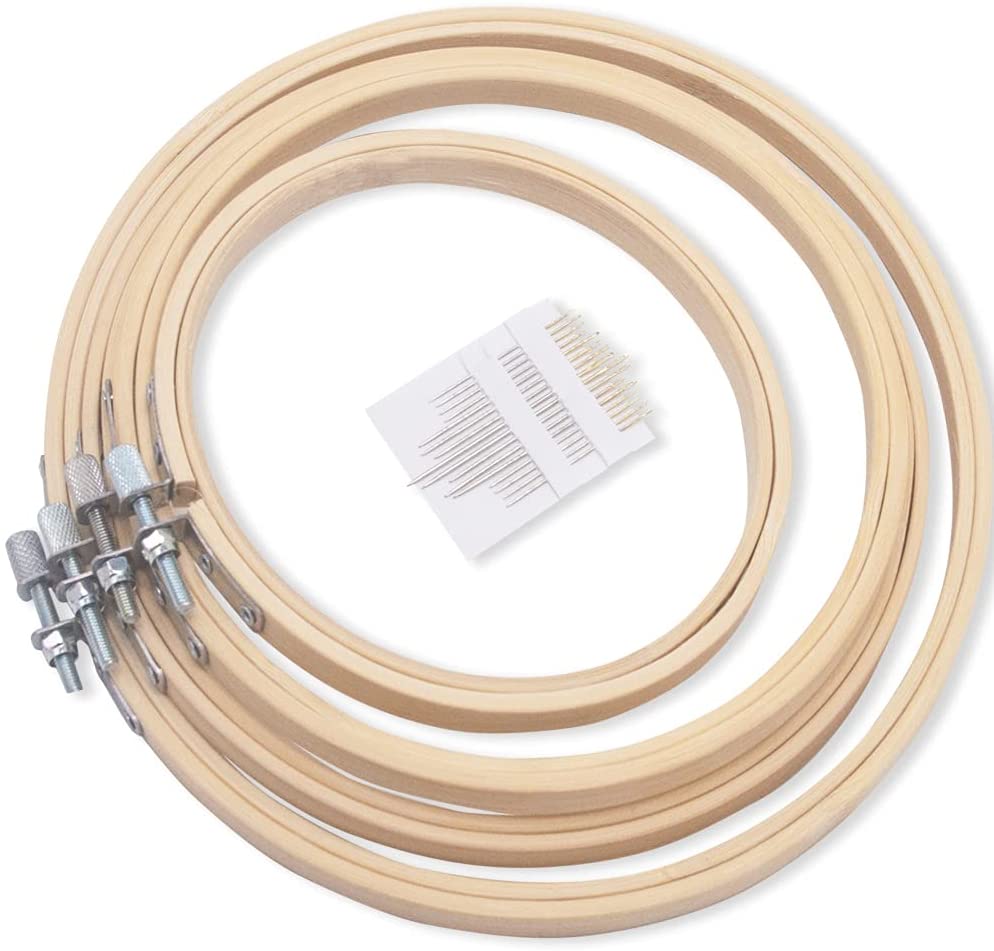Silk painting is an ancient art form, first developed in China when it was reserved for the Emperors. Today, it makes a fun and relaxing hobby. Hand painting scarves can create beautiful, wearable works of art and thoughtful gifts for friends and family.
Silk painting can also be used to create focal elements in card making, wall hangings, pillowcases, bags, pocket squares, neckerchiefs, and other decorative projects.
In this beginner's guide to silk painting, we show you how to make your own silk-painted scarf. First, you'll learn how to dye the silk and create a mottled texture. Then you'll learn how to use gutta to draw your outlines, and paint your design using silk paint.
We'll show you how to fix the colour so that it won't fade, and even give you a free silk painting template, so you can make your own koi carp silk painted scarf. We also share expert tips and tricks so that you can get the most out of the hobby.
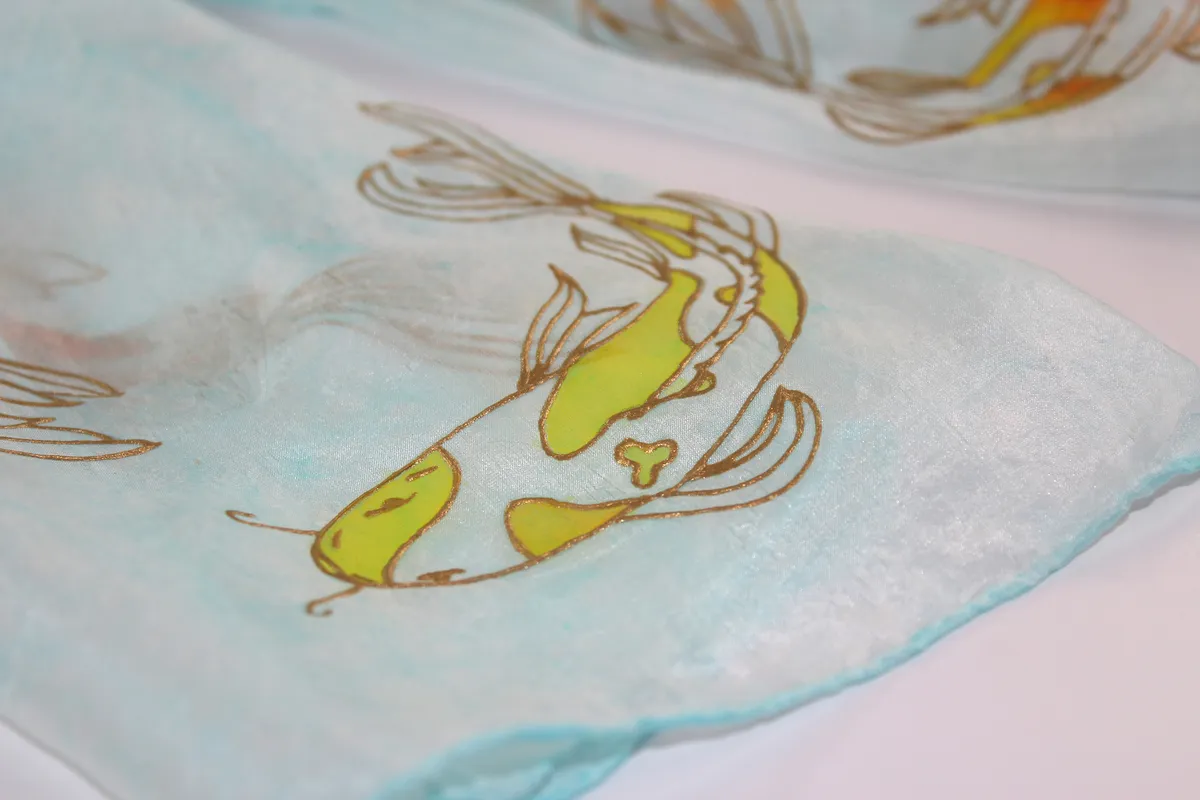
Do you like this article, a beginner’s guide to silk painting? Why not check out some of our other beginner’s guides, right here on Gathered. If you’re into painting, why not try your hand at glass painting with our beginner’s guide to glass painting, where we show you how to make a sweet wildflower glass (there’s a free template for you to download), or how about learning how to paint a stunning watercolour galaxy?
If you’re looking to boost your craft stash, we’ve got you covered. We’ve rounded up the best watercolour paints and best acrylic paints, or if digital art is more your thing, we share our expert opinion on the best drawing tablets for beginners.
We love seeing what you make, so don’t forget to share your craft projects with us on Instagram, Facebook, or Twitter, too!
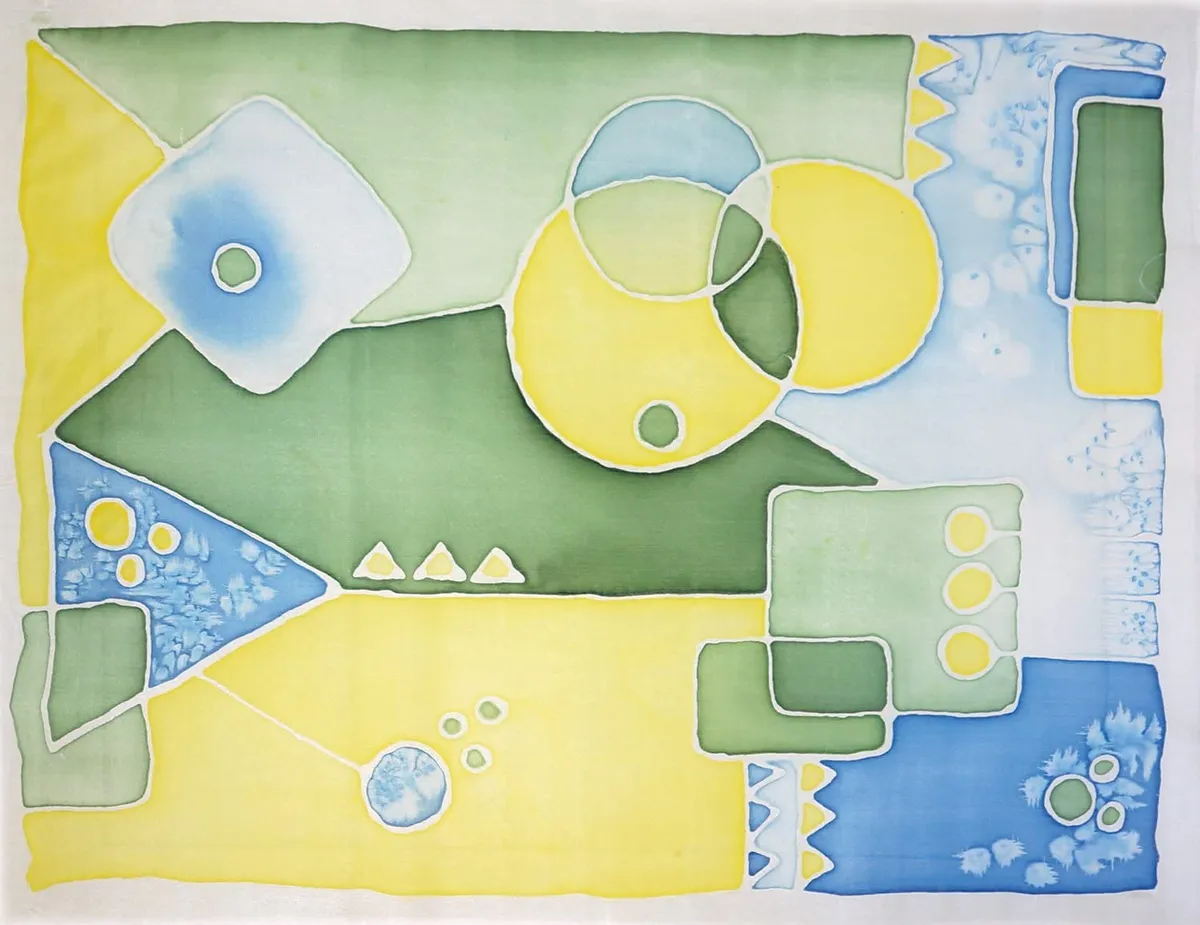
What is silk painting?
Silk painting is the traditional art of painting on silk. It dates back to at least the 2nd Century, but may be much older, as silk has been cultivated for more than 3,500 years.
The silk is stretched on a frame or embroidery hoop, then using a resist (called a gutta outliner), the outline of a design is drawn onto the silk. Once dry, the design is rendered using silk paint, before being ironed to ‘set’ the paint and gutta.
Buy a silk painting kit!
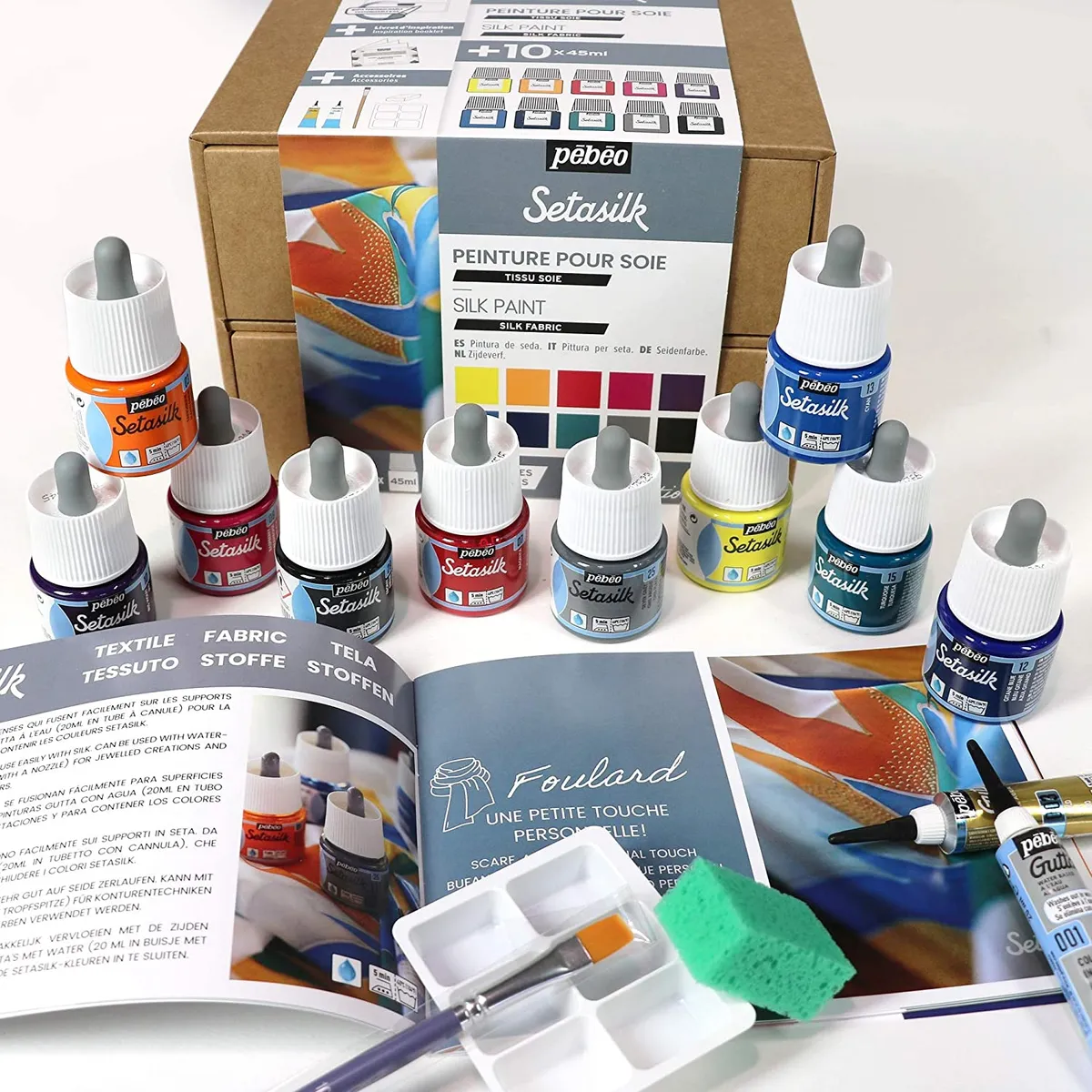
This silk painting kit has everything you need to get started, including ten 45ml pipette bottles of silk paint in yellow, tangerine, magenta, raspberry, iris, violet, cyan, gitane blue, turquoise, silver, grey and ebony. It also comes with two 20ml tubes of water-based gutta in colourless and gold, as well as a palette, brush, sponge and 50-page booklet with creative ideas for projects and workshops.
The gold gutta is made with the traditional formula, while the colourless gutta is specially formulated to be removed with water. It also comes in a brilliant desk-top drawer set made from sturdy kraft card, so it looks great on your craft desk! These inks are all mixable, and each bottle is fitted with a pipette to ensure you only use what you need.
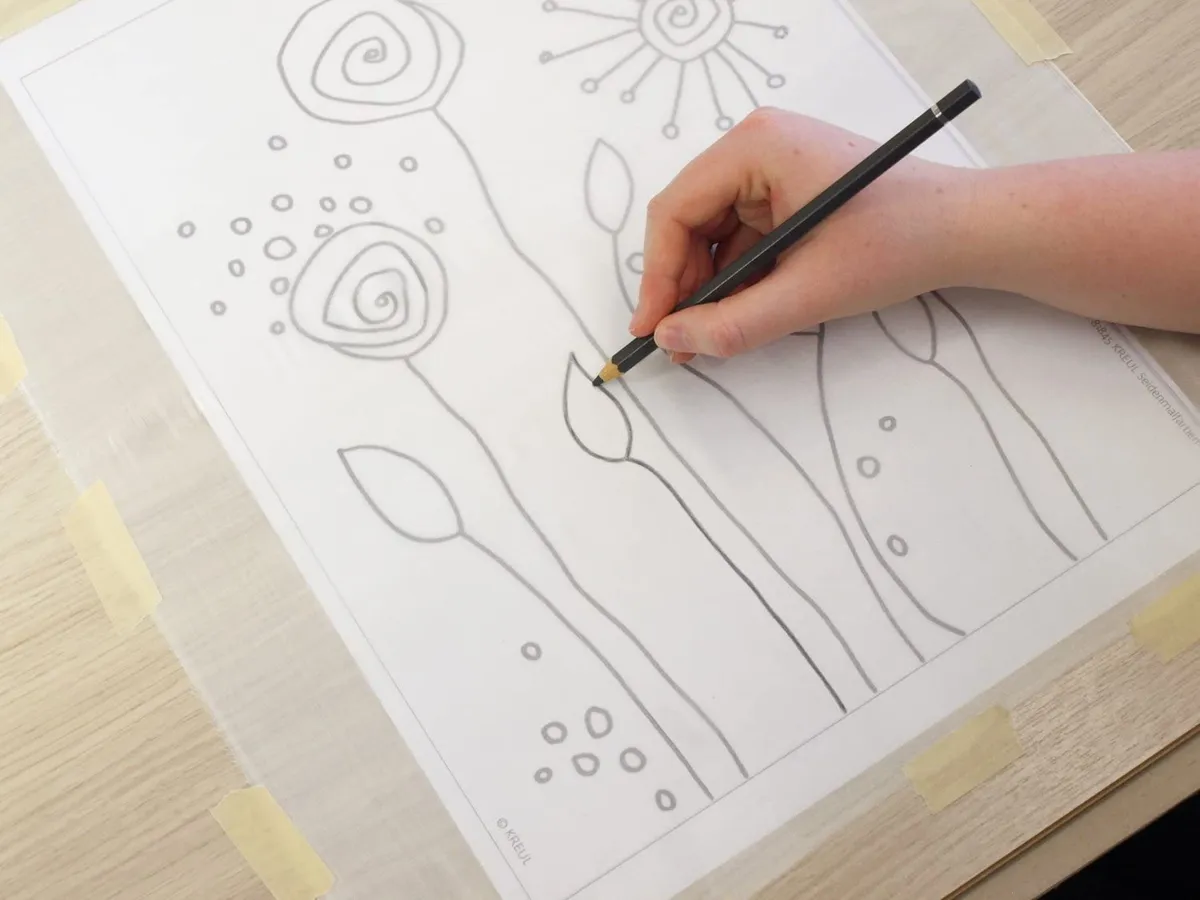
Where to buy silk painting supplies
As silk painting supplies are fairly specialist art materials, they’re not necessarily available in all craft stores. We’ve put together this list of suppliers who stock silk painting materials:
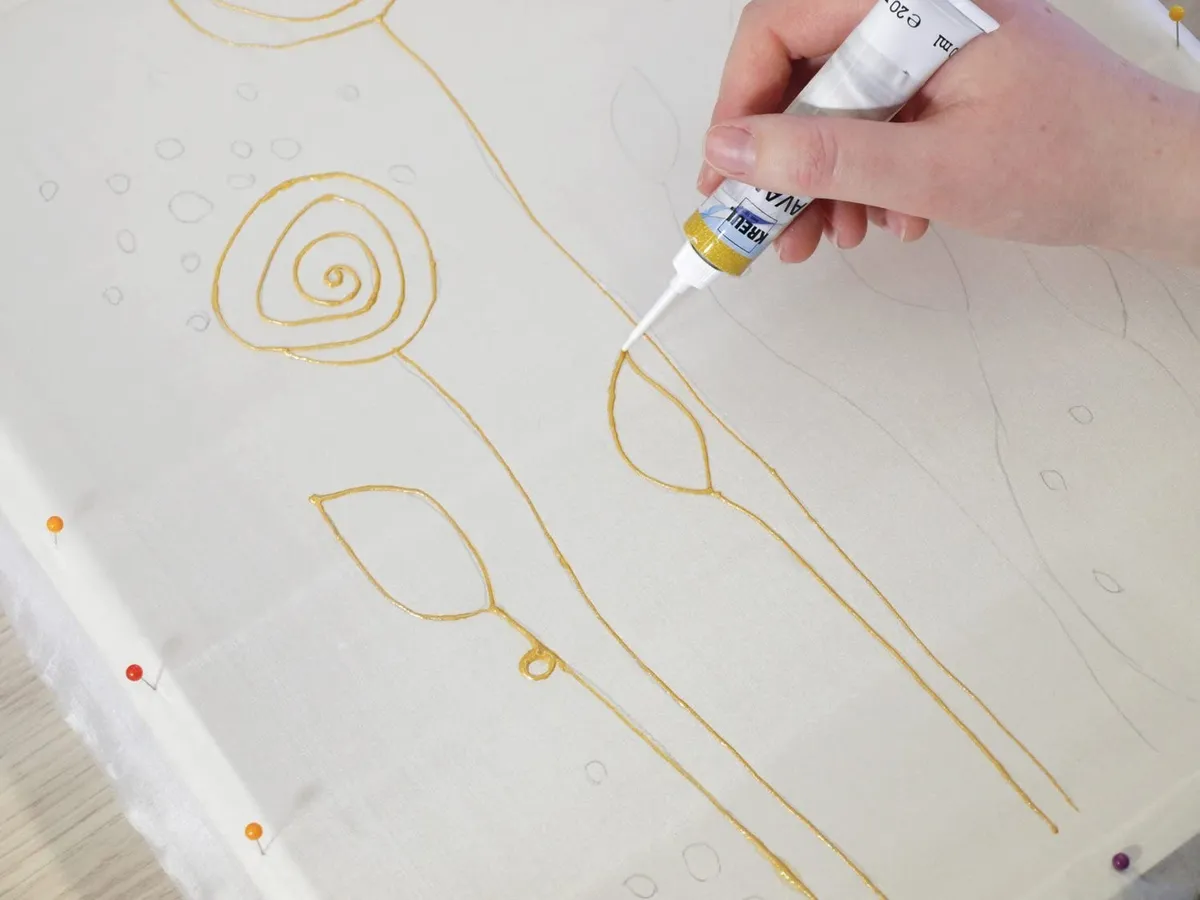
Top tips for silk painting
- Stretch your silk and keep it taught while painting.
- If you’ve found a silk painting design that you like, because the silk is see-through, you can trace the design directly onto your silk.
- By ‘fixing’ each layer of colour in your silken masterpiece, you can use different techniques and colours on top of each other.
- Experiment by using inks in spray bottles, and spritzing the fabric to get watercolour effects on your material.
- Sprinkle salt onto freshly soaked silk to get a mottled effect.
- Wear gloves! Silk paint will stain everything it touches (don’t say we didn’t warn you).
- If you don't have an air-vanishing pen to draw your design, use a soft pencil. 4B is ideal. The pencil will gradually fade as you wash your silk.
- Keep a wad of tissue handy to absorb excess paint and gutta while you are working.
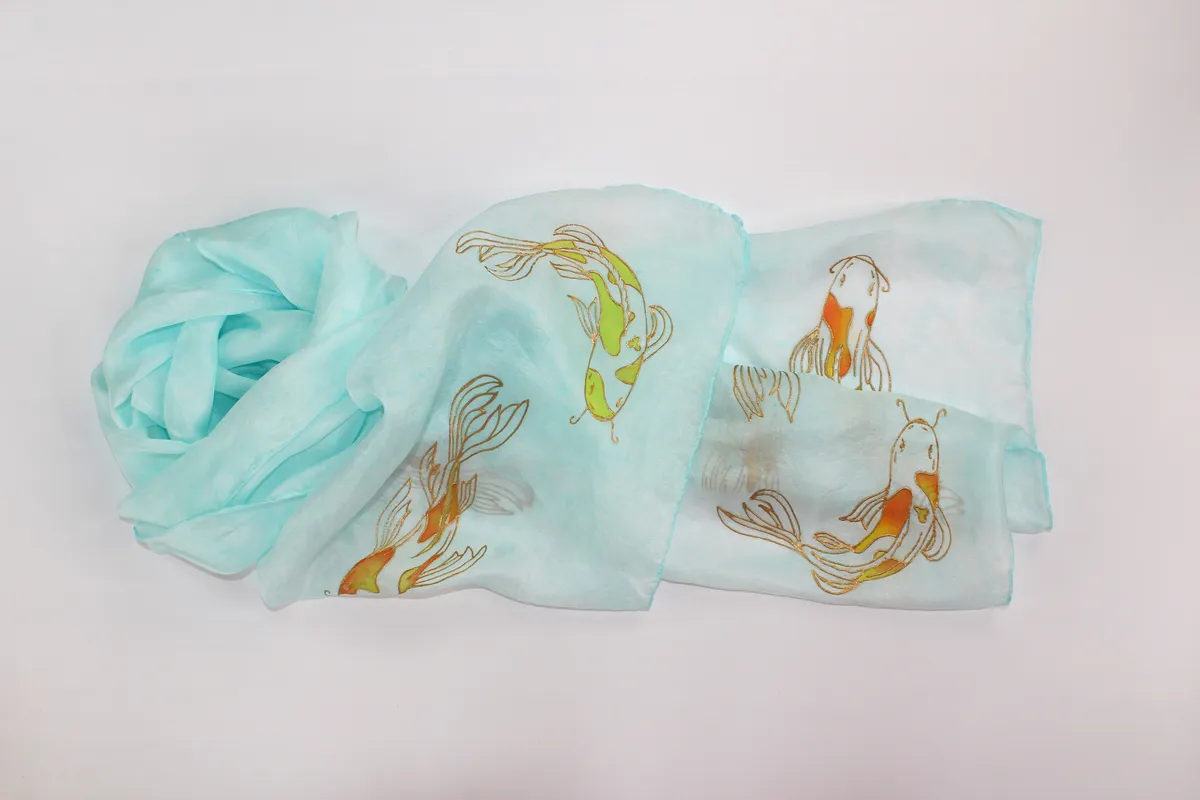
- When using the gutta, make sure that you fully enclose your shapes. Otherwise, when you come to paint the silk, the paint will bleed outside the lines.
- Check that your shapes are fully enclosed (no gaps) by turning the silk over. It's easier to spot gaps from the other side.
- Use a cocktail stick to drag the gutta around on the silk, and smooth out air bubbles (which we don't want).
- Once your masterpiece is complete and dry, iron for 5 minutes to fix your artwork.
- If you don't iron it, or if you don't iron it for long enough, the gutta will peel away when wet. This is useful to know if you're using the gutta in a similar way to the way you would use masking fluid in watercolour art. Learn more about how to use masking fluid in our tutorial, how to paint watercolour pebbles.
- Create a marbled effect by dabbing different colours of silk paint onto the silk. The colours will naturally spread out on the silk and blend together where they meet.
- Once dry, silk paint tends to be quite light. You can build up the brightness of the colours by adding more layers of colour.
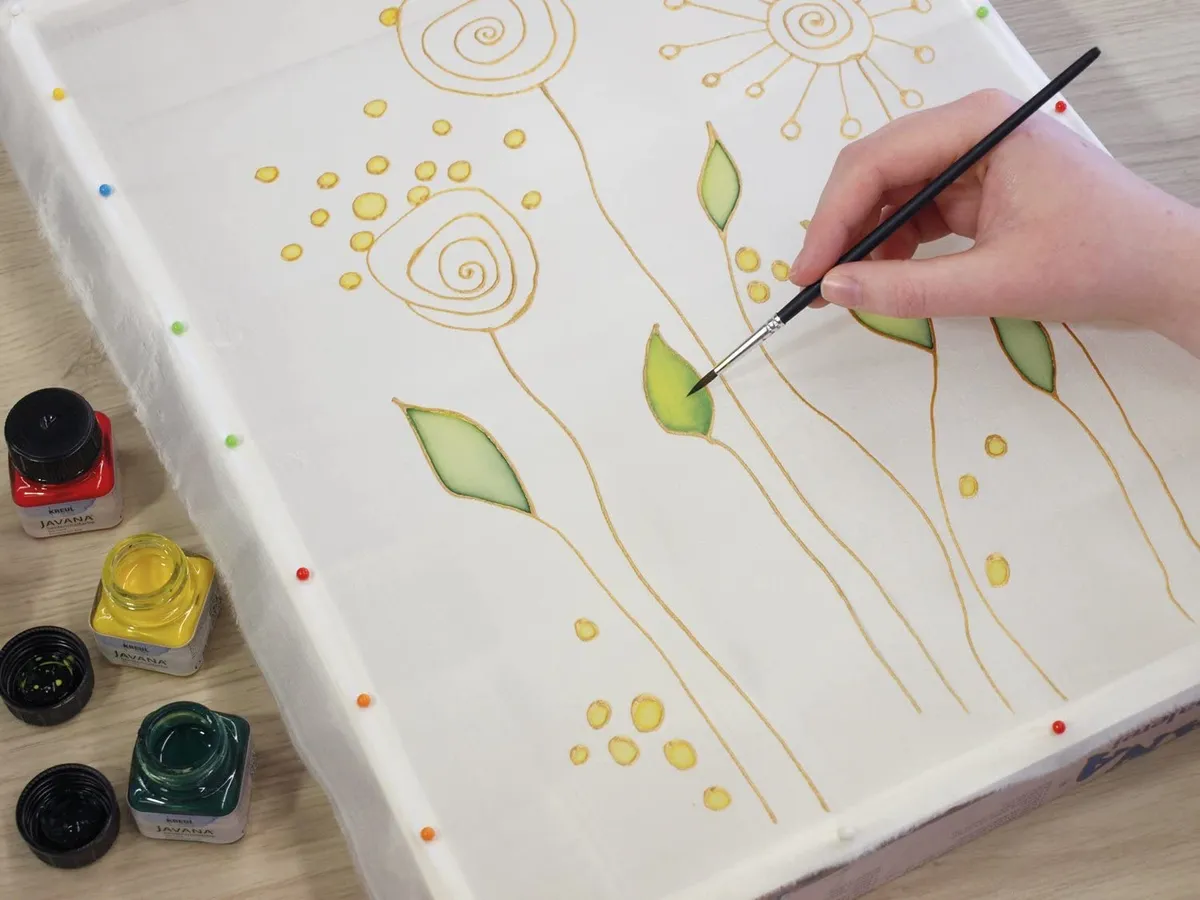
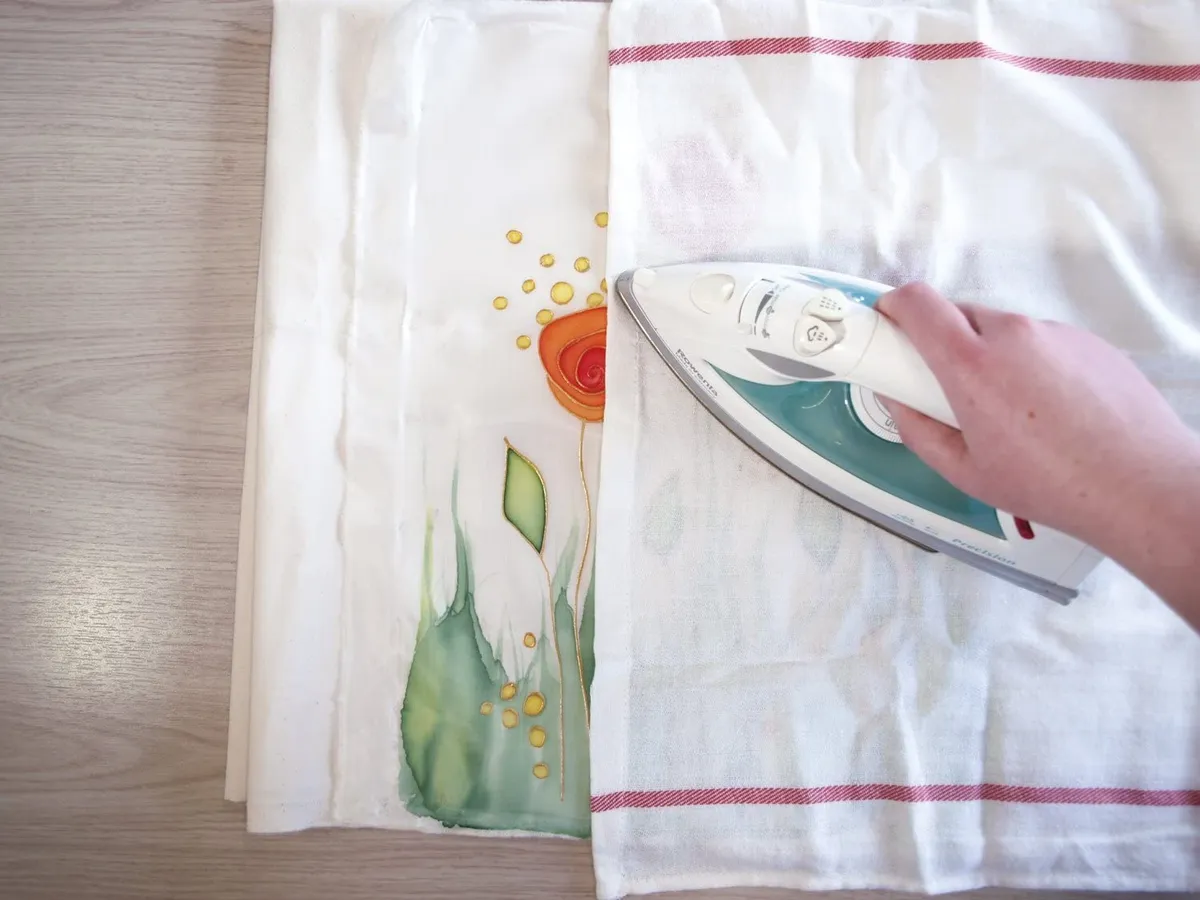
How to do silk painting
You will need
- Silk
- Silk paint and brush
- Palette
- Gutta
- Salt
- Glass bowl
- Gloves
- Air-vanishing pen or soft pencil
- Embroidery hoop
- Iron
- Your exclusive silk painting templates
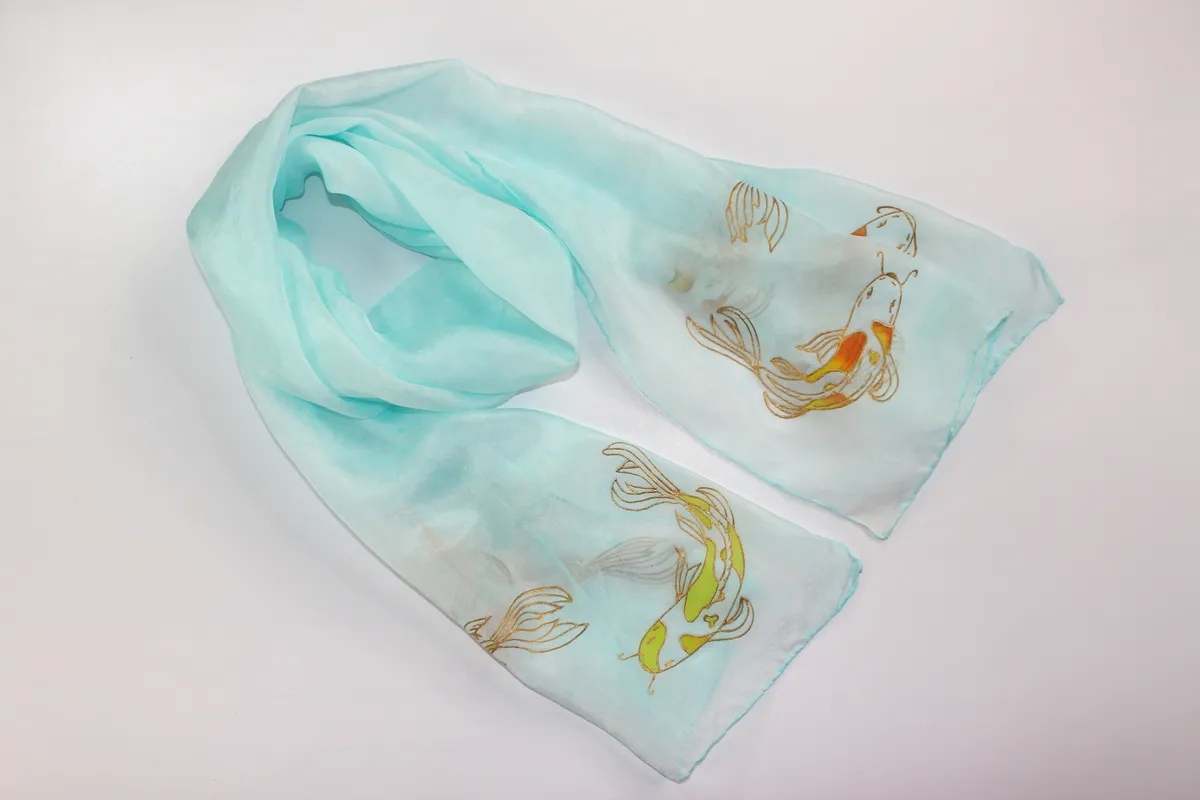
How to dye silk
If you want to try silk painting and want instant, easy results, we think you’ll like this. By using the scrunching technique, you can achieve beautiful, mottled results in just a few minutes. Experiment with different colours and ink concentrations, and you’ll soon be confident whipping up your own mottled scarf in no time.
If you like this, then be sure to check out our guide on how to tie-dye a t-shirt!
